Goodbye Summer, Hello Germs / Snap, Crackle, Pop: Chiropractic Care Explained










3 JuniorDishChefsIt Out

























Visit RBOI.com or call 1.352.732.0277 to schedule a consultation. Delicious Facebook Slash Dot Flickr MySpace Mixx Twitter StumbleUpon Skype Retweet Digg Technorati Flickr MySpace Twitter StumbleUpon Retweet Digg Delicious Facebook Slash Dot Flickr MySpace Mixx FriendFeed SlideShare Twitter StumbleUpon Skype YouTube Google Retweet Digg Technorati LinkedIn Google Talk OCALA TIMBER RIDGE THE VILLAGES LECANTO INVERNESS Tobey Phillips beat breast cancer – twice – thanks to advanced treatment at RBOI. No one expects to get breast cancer at 24. Due to Tobey’s young age at the time of diagnosis, there was
clear path for treatment, but in a two-hour meeting that
Tobey, her
RBOI experts,
the monster
the
no
included
family, Dr. Bennett and his team of
they created one. After an initial surgery and radiation, then a double mastectomy, Tobey was declared cancer free. She is now happily married with a son — who will someday learn all about how brave his mom really is. We helped Tobey write her success story. Let us help write yours. My son
loves when I do
voices. He doesn’t know I already beat
biggest monster of all.
U KNEE QUE

Mako™ partial knee replacement is the only truly patient-specific procedure, planned from a 3-D model of your knee and performed with proven, highly accurate Mako™ robotic-arm assisted surgery.
Compared with manual Oxford® procedures, Mako™ partial knee replacement offers:
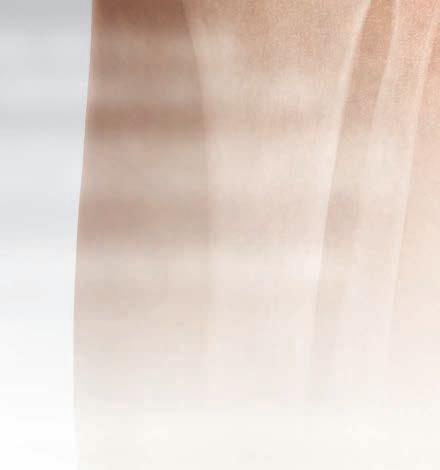
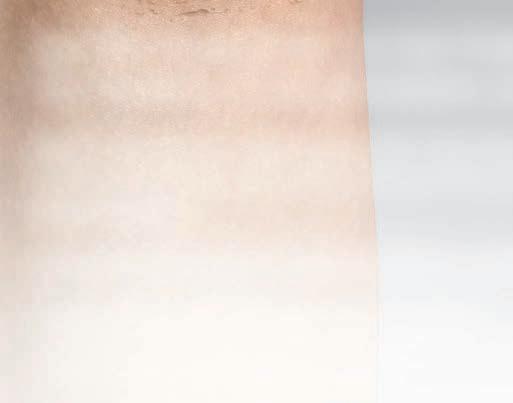
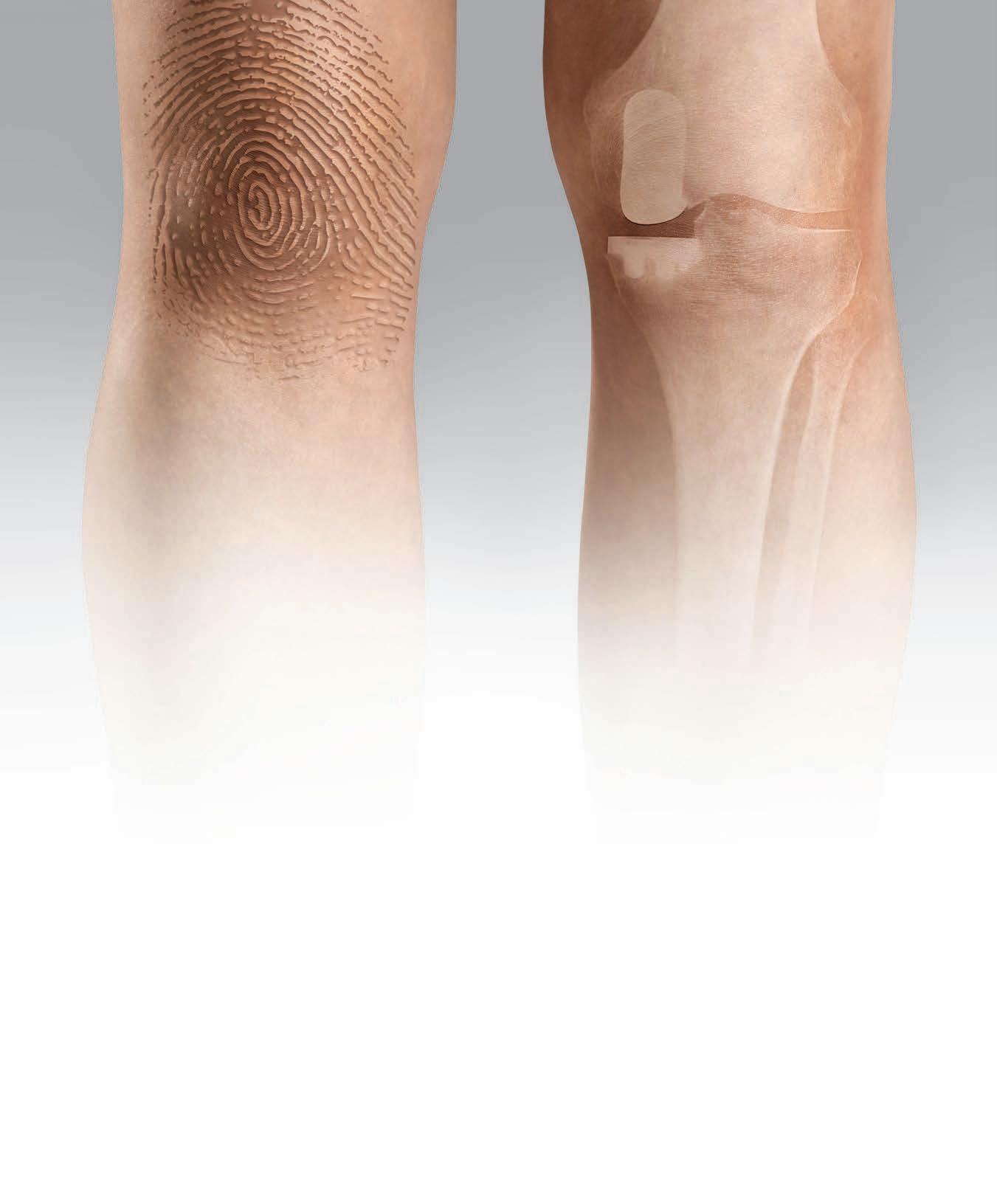
• Less post-op pain from Day 1 up to 8 weeks 1
• Increased knee functionality at 3 months post-op1
• 9 times lower failure rate at 2 years2
Mako™ partial knee replacement is available at Ocala Regional Medical Center.
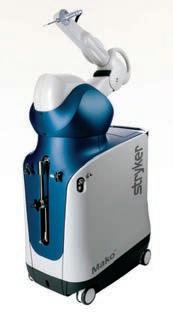
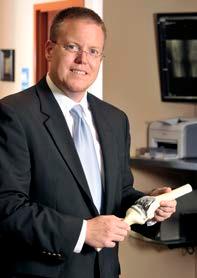
Just like fingerprints, no two knees are the same. You deserve a knee procedure customized just for you.
improve
AAOS 2013
Chicago, IL. 2. Roche MW,
T, Pearle AD, Dounchis J. Two year survivorship of robotically guided medial MCK onlay. 25th Annual Congress of ISTA, October 3-6, 2012, Sydney, Australia. Oxford ® is a registered trademark of Biomet, Inc. Individual results may vary. There are risks associated with any knee surgical procedure, including Mako™ partial knee replacement. Your doctor can explain these risks and help determine if Mako™ partial knee replacement is right for you. © 2013 MAKO Surgical Corp. 208820 r00 05/13 Contact Dr. Derek Farr today. 2640 SW 32nd Place, Ocala, FL 352-369-1099 | twinpalmortho.com
1. Blyth MJ, Smith J, Jones B, MacLean AD III, Anthony I, Rowe
P. Does robotic surgical assistance
the accuracy of implant placement in unicompartmental
knee arthroplasty?
Annual Meeting, March 19-23, 2013,
Coon
For more information on Mako™ robotic-arm assisted surgery or to reserve a seat at an upcoming educational seminar, please call 800-530-1188. Friday, Aug 26 at 2:30pm • Ocala Health Senior Wellness Community Center Thursday, Sept 8 at 2pm • Comfort Suites, The Villages Thursday, Oct 27 at 2pm • Comfort Suites, The Villages Thursday, Dec 1 at 2pm • Comfort Suites, The Villages
Dr. Derek Farr
For 25 years, we have been committed to creating an environment where our residents feel secure, cared for and loved. We would be honored to care for your loved ones in their time of need.

Services Offered:
In-House Psychiatrist
Podiatrist
Ophthalmologist




Dermatologist
Nurse Practitioner

Organized Social Activities
Church Services
Daily Living Assistance
We are currently accepting referrals
Ocala’s Best-Kept Secret
Prestige Manor
Assisted Living Facility
6333 SE Babb Rd. | Belleview, FL | 352-307-6333
prestigemanorassistedliving.com

 Carrol Dillon-Smith Administrator/Owner Megan Christine Forrest Director of Operations
Carrol Dillon-Smith Administrator/Owner Megan Christine Forrest Director of Operations
Safe and effective evaluation and treatment for vascular conditions


From varicose vein treatment, catheter placement and tumor eradication to uterine artery embolization and management of painful spinal compression fractures, the Board Certified Interventional Radiologists of CVH diagnose and treat a gamut of vascular and non-vascular diseases and disorders both in-office and at the region’s finest medical centers.
Our advanced technologies and highly experienced and trained doctors and technologists provide the latest state-of-the-art procedures designed to support and restore health, enhance comfort and improve quality of life, usually without the risks and complications associated with traditional surgical techniques.

Procedures performed at: Munroe Regional Medical Center (MRMC) and Ocala Regional Medical Center (ORMC) We contract with a wide range of networks, including Medicare, Medicaid, and file all claims with the exception of non-contracted HMOs. (352) 671-4252 www.centerforvascularhealth.com BOARD CERTIFIED, VASCULAR AND INTERVENTIONAL FELLOWSHIP TRAINED RADIOLOGISTS Rolando E. Prieto, MD David C. McKay, MD
R. Rivera, MD
I. Bohsali, MD
S. Scales, MD
Caleb
Kareem
John
If you have a vascular, vertebral or other health concern, ask your doctor about what CVH can do for you.
Missing the fairway 12 times is not something you had planned for...
Missing the fairway 12 times is not something you had planned for...


neither was your trip to the ER
neither was your trip to the ER
Since everything in life can’t be planned, isn’t it good to know you can count on short ER wait times at Ocala Regional Medical Center and West Marion Community Hospital? Emergencies are our rst priority and our wait times re ect that sense of urgency whether you have breaks or strains, stomach pains, pounding headaches or chest pain. Emergency trained physicians provide fast and friendly medical care close by so you can get back in the swing of activities you enjoy most.
Since everything in life can’t be planned, isn’t it good to know you can count on short ER wait times at Ocala Regional Medical Center and West Marion Community Hospital? Emergencies are our rst priority and our wait times re ect that sense of urgency whether you have breaks or strains, stomach pains, pounding headaches or chest pain. Emergency trained physicians provide fast and friendly medical care close by so you can get back in the swing of activities you enjoy most.
ocalahealthsystem.com
ocalahealthsystem.com








Ocala Regional Medical Center West Marion Community Hospital
Ocala Regional Medical Center West Marion Community Hospital
Ocala Health has the shortest ER wait times in town. Text ER to 23000 for average ER wait times.
Ocala Health has the shortest ER wait times in town. Text ER to 23000 for average ER wait times.

Kids In The Kitchen

› PAGE 24
Sickness Syllabus › PAGE 30
How can you keep your children healthy, whether they’re still finger painting or driving themselves to school? Here’s the rundown on sickness this school year.
› By Katie McPherson
Keeping It All In Line › PAGE 36
If you’ve never had back pain, you should consider yourself fortunate. Or it may just be that your time has not yet come. › By Cynthia
McFarland
By
DEPARTMENTS
HEALTHY beat
› PAGE 9
TRENDS | NEWS | PEOPLE


 By Cealia Athanason,
By Cealia Athanason,
HEALTHY dose
› PAGE 17
INSIGHT | ADVICE | SOLUTIONS
HEALTHY body
› PAGE 41
NUTRITION | FITNESS | BEAUTY
HEALTHY vibe
› PAGE 45
MIND | SPIRIT | FINANCE
JoAnn
Guidry, Molly Norman & Melissa Peterson
› 10 The new chief in town.
› 12 A stress management solution.





› 14 A bit about business.
By Laurel Gillum, Katie McPherson & Molly Norman
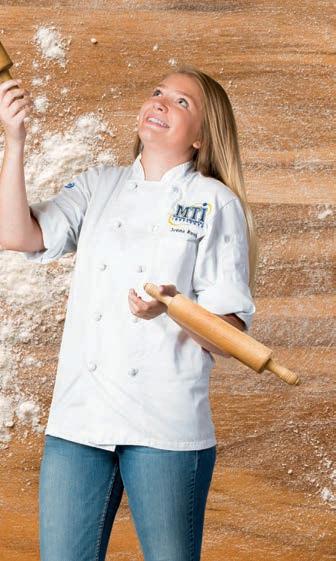
› 18 Be your own advocate.
› 20 Improve your immunity.


› 21 Back-to-school bugs.
By Cealia Athanason, Laurel Gillum & Molly Norman
› 42 Managing overworked muscles.
› 43 Say goodbye to acid.
› 44 Oils for all.
 By Molly Norman
By Molly Norman
› 46 Pests, be gone (naturally).


› 48 Teach ‘em while they’re young.

AUG ’16 › healthyliving magazines.com 5 FEATURES august 2016
JuniorDishChefsIt Out Goodbye Summer, Hello Germs / Snap, Crackle, Pop: Chiropractic Care Explained
3
COVER AND ABOVE
COVER
PHOTOS BY JOHN JERNIGAN
We caught up with three remarkable teens who have found their place in the kitchen at an early age and have definite plans to make careers in the culinary world.
›
Cynthia McFarland
(352)282-4000


ADVISORY BOARD
HEALTHY LIVING MAGAZINE has brought together a group of medical experts and community leaders to serve on our advisory board and share their expertise and insight with our readers.
Craig Ackerman Public Information O cer FLORIDA DEPARTMENT OF HEALTH IN MARION COUNTY
Ashley Hersey Clinical Liaison KINDRED HOSPITAL OCALA
Ashley Cauthen, M.D. Cosmetic And Clinical Dermatology MIDSTATE SKIN INSTITUTE
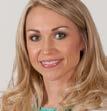

Derek Farr, D.O. Orthopedic Surgeon TWIN PALMS ORTHOPEDICS
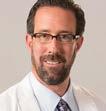
Amy McLaughlin, APR, CPRC Director, Marketing & Communications SEVEN RIVERS REGIONAL MEDICAL CENTER

Katie Myers, APR Director Of Marketing And Public Relations CITRUS MEMORIAL HEALTH SYSTEM

Navinderdeep Nijher, M.D. Plastic Surgery OCALA PLASTIC SURGERY

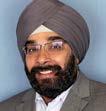
Chris Okonkwo, M.D. Pediatrics CHILDREN’S HEALTH OF OCALA
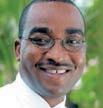
Joseph Foster Senior Solutions Director SUPERIOR RESIDENCES OF LECANTO

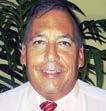
Carmen M. Hernandez Health Education Program Manager FLORIDA DEPARTMENT OF HEALTH
Michael Holloway, M.D. Physician-Directed Weight Management & Medical Aesthetics LIFESTYLE SOLUTIONS MEDSPA
Mark Jank, M.D. Ophthalmology OCALA EYE


Amanda Ostrom Director of Marketing and Communications RADIOLOGY ASSOCIATES OF OCALA, P.A.


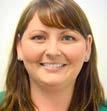
Jayanti Panchal, M.D. Internal Medicine And Medical Weight Management SUCCESS BY DESIGN
Carolyn Reyes, MPA, M.Ed. Community Liaison, Citrus & Hernando Counties COMFORT KEEPERS
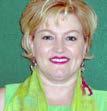
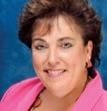
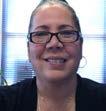
Suzanne Santangelo Director, Marketing OCALA HEALTH
Linda M. McKenna Director of Professional Relations CHAPTERS HPH HOSPICE
Meghan Shay, CFRE Director Of Public Relations And Development THE CENTERS
YOUR CHOICE FOR REHABILI TAT ION IS
Custom-made, fresh sandwiches, salads and flatbreads made right before your eyes. The “healthy” alternative to fast food eat fresh BEVERLY HILLS 4089 N Lecanto Hwy 352.746.0057 BROOKSVILLE 11373 Cortez Blvd 352.596.5505 19438 Cortez Blvd 352.799.7047 13078 Cortez Blvd 352.596.8261 31807 Cortez Blvd 352.754.1100 CRYSTAL RIVER 723 NE Hwy 19 DADE CITY 12301 US Hwy 301 S 352.521.7000 DUNNELLON 11150 N Williams St #102 352.489.1120 HOLIDAY 1938 US 19 N 727.945.8272 HOMOSASSA 3756 S Suncoast Blvd 352.628.6822 9481 S Suncoast Blvd INVERNESS 97 S Pine Ave 352.344.8996 2639 E Gulf to Lake Hwy 352.637.0800 LAND O’LAKES 2406 Land O’Lakes Blvd 813.949.8483 7852 Land O’Lakes Blvd 813.995.2544 LECANTO 1936 N Lecanto Hwy 352.527.0191 NEW PORT RICHEY 7231 SR 54 727.375.1570 8745 SR 54 727.372.6255 4218 US Hwy 19 727.845.7115 5308 Little Road 727.376.7171 6436 Massachusetts Ave 727.846.9700 8907 Mitchell Blvd 727.375.2726 11332 Ridge Rd 727.842.2771 PORT RICHEY 8629 US 19 N 727.845.4575 9409 US Hwy 19 727.846.0888 10089 US Hwy 19 N 727.863.3229 10900 SR 54 727.376.1200 3927 Ridge Rd 727.847.4263 SPRING HILL 4144 Mariner Blvd Unit No A 104 352.684.9565 5394 Spring Hill Dr 352.686.0992 14308 Spring Hill Dr 352.799.8878 11218 Spring Hill Dr 352.686.0910 TRINITY 9330 SR 54 727.846.0135 WESLEY CHAPEL 27709 SR 56 #102 813.406.4803 5425 Village Market 813.973.4118 ZEPHYRHILLS 32801 Eiland Blvd 813.788.3456 5406A Gall Blvd 813.782.1381 6512 Gall Blvd 813.788.9677 Custom-made, fresh sandwiches, salads and flatbreads made right before your eyes. The “healthy” alternative to fast food eat fresh BEVERLY HILLS 4089 N Lecanto Hwy 352.746.0057 BROOKSVILLE 11373 Cortez Blvd 352.596.5505 19438 Cortez Blvd 352.799.7047 13078 Cortez Blvd 352.596.8261 31807 Cortez Blvd 352.754.1100 CRYSTAL RIVER 723 NE Hwy 19 352.795.2416 6748 W Gulf to Lake Hwy 352.564.8300 1801 NW Hwy 19 #509 352.795.9792 DADE CITY 12301 US Hwy 301 S 352.521.7000 DUNNELLON 11150 N Williams St #102 352.489.1120 HOLIDAY 1938 US 19 N 727.945.8272 HOMOSASSA 3756 S Suncoast Blvd 352.628.6822 9481 S Suncoast Blvd 352.621.7829 HUDSON 14106 US Hwy 19 727.819.9233 8925 SR 52 727.868.1075 INVERNESS 97 S Pine Ave 352.344.8996 2639 E Gulf to Lake Hwy 352.637.0800 LAND O’LAKES 2406 Land O’Lakes Blvd 813.949.8483 7852 Land O’Lakes Blvd 813.995.2544 LECANTO 1936 N Lecanto Hwy 352.527.0191 LUTZ 22826 SR 54 813.909.2270 24726 SR 54 813.406.4919 1575 Land O’Lakes Blvd 813.949.3232 NEW PORT RICHEY 7231 SR 54 727.375.1570 8745 SR 54 727.372.6255 4218 US Hwy 19 727.845.7115 5308 Little Road 727.376.7171 6436 Massachusetts Ave 727.846.9700 8907 Mitchell Blvd 727.375.2726 11332 Ridge Rd 727.842.2771 PORT RICHEY 8629 US 19 N 727.845.4575 9409 US Hwy 19 727.846.0888 10089 US Hwy 19 N 727.863.3229 10900 SR 54 727.376.1200 3927 Ridge Rd 727.847.4263 SPRING HILL 4144 Mariner Blvd Unit No A 104 352.684.9565 5394 Spring Hill Dr 352.686.0992 14308 Spring Hill Dr 352.799.8878 11218 Spring Hill Dr 352.686.0910 TRINITY 9330 SR 54 727.846.0135 WESLEY CHAPEL 27709 SR 56 #102 813.406.4803 5425 Village Market 813.973.4118 ZEPHYRHILLS 32801 Eiland Blvd 813.788.3456 5406A Gall Blvd 813.782.1381 6512 Gall Blvd 813.788.9677 BEVERLY HILLS 4089 N LECANTO HWY 352.746.0057 CRYSTAL RIVER 723 NE HWY 19 352.795.2416 6748 W GULF TO LAKE HWY 352.564.8300 1801 NW HWY 19 #509 352.795.9792 HOMOSASSA 3756 S SUNCOAST BLVD 352.628.6822 9481 S SUNCOAST BLVD 352.621.7829 INVERNESS 97 S PINE AVE 352.344.8996 2639 E GULF TO LAKE HWY 352.637.0800 LECANTO 1936 N LECANTO HWY 352.527.0191
PUBLISHER

Kathy Johnson kathy@healthylivingmagazines.com
OFFICE/PRODUCTION MANAGER Cynthia Brown art@healthylivingmagazines.com
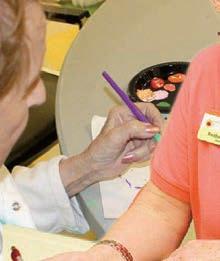




EDITORIAL
EXECUTIVE EDITOR
Karin Fabry-Cushenbery karin@healthylivingmagazines.com

MANAGING EDITOR
Melissa Peterson melissa@healthylivingmagazines.com
ASSOCIATE EDITOR


Katie McPherson katie@ocalastyle.com
EDITORIAL ASSISTANT & SOCIAL MEDIA SPECIALIST


Cealia Athanason cealia@ocalastyle.com


CONTRIBUTING WRITERS
Brett Ballantini
Jim Gibson
Laurel Gillum
JoAnn Guidry
Bonnie Kretchik
Cynthia McFarland
EDITORIAL INTERNS
Grace Cali
Allyson Montoya
Molly Norman
ART art@healthylivingmagazines.com

CREATIVE DIRECTOR Jason Fugate
ART DIRECTOR

Jessi Miller Castro
GRAPHIC DESIGNER





Christina Geiger
PHOTOGRAPHERS John SheilaJernigan fotolia.comHartley
SALES DIRECTOR OF SALES Dean Johnson deanjohnson@healthylivingmagazines.com
SALES MANAGER Sharon Morgan
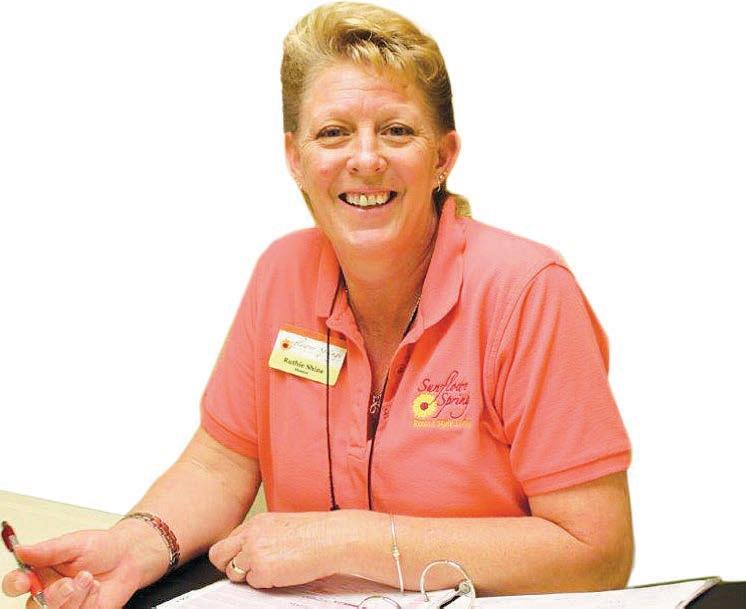

ACCOUNT EXECUTIVES



Anne Farrior anne@healthylivingmagazines.com
Lori Tani
Skip Linderman

Peggy Sue Munday
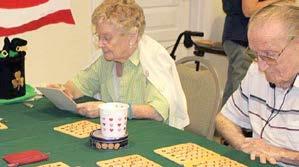
Liza Fritz
Tammy Walters
Dawn Anderson
DISTRIBUTION
Dave Adams
Debra McQueen




Rick Shaw O CALA

AUG ’16 › healthyliving magazines.com 7 MARION & CITRUS
INC. o: 352.732.0073 › f: 352.732.0226 1007 E. Fort King St., Ocala, FL 34731 healthylivingmagazines.com HEALTHY LIVING MAGAZINES / AUGUST 2016 / VOL. 4, NO. 8 Published monthly by Ocala Publications, Inc. All contents © 2016 by Ocala Publications Inc. All rights reserved. Nothing may be reprinted in whole or in part without written permission from the publisher. For back issues or advertising information, call (352) 732-0073. Return postage must accompany all unsolicited manuscripts and artwork if they are to be returned. Manuscripts are welcomed, but no responsibility can be assumed for unsolicited materials. “Promotional” and “Promotional Feature” denote a paid advertising feature. Publisher is not responsible for claims and content of advertisements. OCALA MARIONCOUNTY CHAMBER&ECONOMIC PARTNERSHIP (Kerning50pt) MOVING FORWARD COLORSFONTS GREYSCALE LOGOS TAGLINE & ARROW OcalaPublications Come by and see why we are the area’s choice in outstanding service for an active lifestyle! www.SunflowerALF.com 8733 West Yulee Drive, Homosassa, Florida 352-621-8017 Assisted Living Facility #11566 000NPTG We know how important it is to stay active, so we have made FUN our focus for an enriched lifestyle. We o er an abundance Where relationships blossom daily.™ Activities & Fun
PUBLICATIONS,



















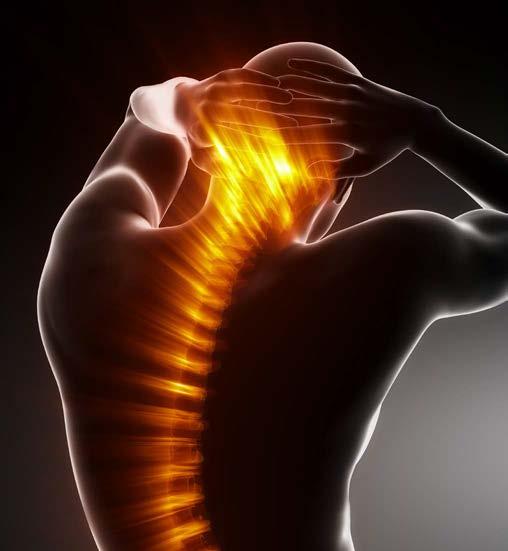
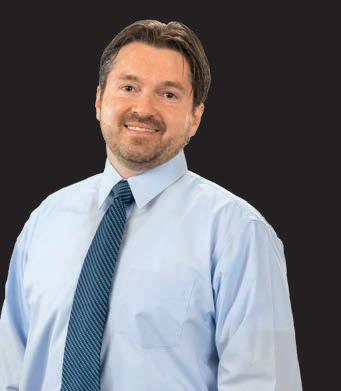








8 healthyliving magazines.com AUG ’16 House too big and hard to maintain? Why not relax and enjoy your retirement? Inverness Club Senior Apartments –Single-Story Living 518 Ella Ave., Inverness, FL • 352-344-8477 www.invernessclubapartments.com • A full-course meal each day in our dining room (or delivered to your apartment) • Transportation to doctors, shopping, and special events • Light housekeeping twice a month • Personal handyman services • A full-time activities director • Community rooms & laundry facility • Beauty/barber shop on-site • Library with computer & Internet Come visit this beautifully landscaped property today. e o er complimentary to rs an l nch on ay thru Friday, weekends by appointment. e also provi e s bsi ize ho sing or alifie low income seniors (62 or older) and disabled persons of any age. Treating: Auto Injuries, Lower Back and Neck Pain, Sciatica, Disc Problems, Numbness, Headaches » Flexible Hours » Personalized Therapy Treatments » Friendly, Knowledgeable Staff » 17 Years Experience » Massage Therapy On-Site » Sports Injury Specialist » School and Sport Physicals » Spinal Decompression CALL TODAY! Mention this ad for your FREE consultation We Accept Most Insurances Swinson Chiropractic Located on SR 200, 2 miles west of I-75. Directly across from Publix, Heath Brook Commons 352-840-0444 5481 SW 60th St, #302, Ocala Dr. D.L. Swinson Chiropractic Physician
The Case Against Multitasking
At work, distractions come in the form of text messages, email alerts and mounting to-do lists. And although being able to multitask is usually seen as favorable by employers, turns out, we might want to rethink that logic. According to a recent study, even brief two- to three-second interruptions can double the number of errors participants made on an assigned task. Another study concluded that multitaskers are more easily distracted than those who spend less time switching between tasks, which can apparently happen up to 400 times each day. The take away? Turn o those notification buzzers, and finish one thing before you move on to something else. You’ll be a more productive worker, for sure.

TRENDS NEWS PEOPLE HEALTHY PAGE 9 NEWS
Sources: wellandgood.com
When’s the last time you completely finished one task before moving on to another?
› Chad Christianson appreciates McVay’s work with the hospital.
Level II trauma center and the upcoming standalone emergency room in Summerfield. He has two master’s degrees under his belt—one in business administration and the other in health administration—and has served as the COO of CJW Medical Center in Richmond, Virginia, and at West Houston Medical Center in Texas.
Commitment To Care
Ocala Health’s new CEO is raring to go.
 › By Cealia Athanason
› By Cealia Athanason
Two months ago, on June 1, Chad Christianson began his new position as CEO of Ocala Health. More than 10 years of experience in health care—including leadership roles within the Hospital Corporation of America—has made him more than prepared for the task.
“The Ocala community leadership and teams at both Ocala Regional Medical Center and West Marion Community Hospital have been very welcoming,” he says. “There is a commitment to high quality, compassionate care and a sense of pride in the work they do for this community, and I’m excited to be a part of it.”
Christianson now oversees both hospitals, along with outpatient imaging services, primary care and specialty physician practices, a
“The big difference you see from one facility or community to the next is that while the services may be the same or similar, the culture of each hospital and the needs of the community will be different,” he says. “That’s what I am most focused on right now.”
Randy McVay, the former CEO of Ocala Health, announced his retirement in March in order to spend more time with family and work on personal projects. Besides his hospital work, he’s known for his his charitable endeavors and and overall support of this community.
Christianson also
“Randy McVay and the team at Ocala Health have done an incredible job of positioning us for the future, so the luxury I have is that it’s not about fixing something,” he says. “The foundation is here, and we’ll continue to build on that.”
Christianson is committed to putting patients’ needs front and center and providing the most comprehensive care. He’s looking forward to the enhanced emergency services that will be available to the community once the freestanding emergency room opens in October and also to breaking ground on an expansion at West Marion that will allow for 44 more inpatient beds, nine emergency room beds and two operating rooms.
Christianson and his wife, both UF graduates, grew up in North Central Florida and have welcomed this opportunity to come home again.
Find out more › ocalahealthsystem.com
10 healthyliving magazines.com AUG ’16 beat HEALTHY
PEOPLE
“The culture of each hospital and the needs of the community will be different,” he says. “That’s what I am most focused on right now.”











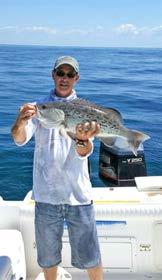














BUY local 352.369.9400 Mon-Fri 9a-6p Sat 9a-4p 217 SE 1st Ave., #200, Ocala BrickCityBicycles.com WE SERVICE ALL BRANDS MOUNTAIN BIKES CRUISERS | ROAD BIKES FIXIES | PADDLE BOARDS www.setthathookfishingcharter.com 352-325-3441 2880 N. Seabreeze Point, Crystal River, FL Captain John Hempel Offshore Only Full-Day Trips - 8 Hours $20 off any massage with Jenn, Ally or Travis, or any facial with Robbin. Expires 9/1/16 2119 East Fort King Street Ocala, FL 34471 www.ocalamassageandspa.com 352-427-4477 Like us on Facebook Lic# MM19881 AUG ’16 › healthyliving magazines.com 11
Yoga For Vets Local
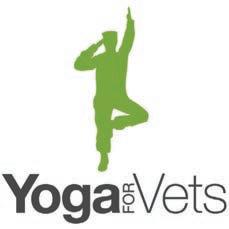
yoga studio offers free yoga
for
military veterans to manage their stress and trauma.
› By JoAnn Guidry
In the midst of a 24-year military career in the U.S. Air Force, Grace Beck was in need of some stress management.
“I had always been an active person. I was a runner, and that did help with managing stress,” says Beck. “But I felt like I needed something more. I did a lot of research and read about different health practices. And that’s how I came to yoga. It just resonated with me.”
Over the years, Beck transitioned from self-practice to classes to finally becoming a certified yoga instructor.
“The practice of yoga brings balance to your life,” says Beck, 47. “It allows your mind, body and spirit to connect, making you whole.”
By the time she retired from the military, yoga had become a lifestyle for Beck. And it only seemed fitting that it became a vocation avenue and a way to give back. In April 2016, she established her Ocala-based Nadi Om Wellness. The name is derived from nadis, which means energy lines flowing through the body; om, a mantra used to bring peace to body, mind and spirit; and wellness, a general state of well-being.

And when Beck became aware of the Yoga For Vets program, it was a perfect fit. Yoga For Vets is a national non-profit organization that assists veterans in managing their stress and trauma through yoga. The organization was founded in 2007 by former Navy deepsea diver Paul Zipes. Yoga For Vets maintains a worldwide directory of studios, teachers, gyms, VA Medical Centers and Veterans Service Centers that offer four free yoga classes.
Count Beck among those listed in that directory. Additionally, she’s reached out to veterans through local organizations to make them aware of the Yoga For Vets program.
“Vets are provided with a free class pass that allows them to attend four yoga classes,” says Beck. “The vets can participate in my regularly scheduled yoga classes, which are small with only eight students in each class. Of course, they can choose to continue past those four initial classes at the regular drop-in rate or through a discounted class pass.”
Being well aware of military camaraderie, Beck also offers “private group classes for vets since they may feel more comfortable in that setting.”
But for Beck, the power of yoga is for everyone.
“Yoga is wonderful for health, for your overall wellness,” she says. “It’s a great way to find balance in your life.”
12 healthyliving magazines.com AUG ’16 Find out more › NADI OM WELLNESS › 6158 SW Hwy 200, Ste. 204, Ocala › nadiomwellness.com › (352) 525-0247 beat HEALTHY
PEOPLE
The practice of yoga brings balance to your life. It allows your mind, body and spirit to connect, making you whole.
› Grace Beck
Photo by John Jernigan

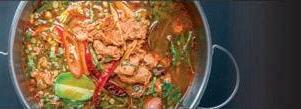











BUY local 304C SW Broadway St., Ocala • 352-867-5557 CAFE Serving excellent, delicious, healthy food from carefully selected local and national organic and fresh food suppliers... it’s unbelievably tasty! Come in and ask us about the benefits of BONE BROTH... Heal your gut | Protect your joints | Look younger Sleep better, feel better | Immune support Stronger bones | More energy Gluten-Free & Vegan Options Check us out on facebook.com/good4youcafe Outdoor Gear • Fly Fishing • Kayak Rentals Mention this ad for 10% OFF Purchase www.sunnysouthoutfitters.com 5550 E. Silver Springs Blvd. Silver Springs, FL 352-620-8640 Licensed Massage erapist Certified Manual Lymph Drainage erapist 9 Years of Experience 352.216.75151807 NE 2nd Street, Ocala www.Erins erapeuticTouch.com Erin Varney MA53767 Ocala’s Premium Frozen Yogurt and Ice Cream Shop! 20% OFF with this ad Crystal River Health & Rehabilitation Let us help you and your loved one reclaim the highest level of independence possible with services including: • 24-Hour, Seven-Days-a-Week Skilled Nursing Care • Physician Oversight • Seven-Days-a-Week Physical, Occupational and Speech Therapies Northport Health Services of Florida, LLC d/b/a/ Crystal River Health and Rehabilitation Center 136 NE 12th Ave., Crystal River, FL 34429 352-795-5044 www.crystalriverhealthandrehab.com Our family caring for yours SHOP LOCAL. EAT LOCAL. SPEND LOCAL. BANK LOCAL. Ocala - 1st Ave 910 SW 1st Avenue Ocala, FL 34471 (352) 732-6616 The Villages 2505 Burnsed Boulevard The Villages, FL 32163 (352) 674-4375 Ocala - Hwy 40 5860 West Highway 40 Ocala, FL 34482 (352) 236-6497 3 Branch Locations | 24-7 Online/Mobile Banking | 24 HR ATM ACCESS cbcnationalbank.com ONLINE ATM 55,000+ ATM’s CREDIT/DEBIT CARDS MONEY MARKET & CD’S MERCHANT SERVICES AUG ’16 › healthyliving magazines.com 13
The More, The Better
Florida Cancer Specialists & Research Institute (FCS), the largest independent hematology/medical oncology practice in the United States, announced the opening of its new location, the Gainesville Cancer Center. The new state-ofthe-art, comprehensive cancer facility, which more than doubles the size of the previous FCS office, is an expansion of The Cancer Center at North Florida Regional Healthcare and brings medical oncology services under the same roof as radiation oncology, as well as ancillary services, such as patient navigation, acupuncture and support groups.
FCS Executive Board Member Dr. Lucio Gordan, who also serves as Medical Director of Informatics for Florida Cancer Specialists, said, “This new facility increases our ability to offer unique, state-of-the-art, multidisciplinary oncology treatments in a more comfortable and convenient setting so that we can deliver personalized cancer therapies and provide renewed hope to the more than 7,000 patient visits each month in Gainesville.”
A Quality Distinction
Preventative Measures
A Helping Hand
Dementia Friendly America has recognized Citrus as the first county in Florida to accept the challenge of helping those with dementia. The county’s goal is to provide an environment that encourages those with dementia and their families to be actively involved in the community for as long as possible. Citrus County’s Action Team will focus on educating, evaluating needs and making accommodations that will benefit all those with cognitive issues. Through the work of over 35 national, leading organizations, the Dementia Friendly America initiative is catalyzing a movement to more effectively support and serve those across America who are living with dementia and their family and friend care partners. Like Citrus County Dementia Friendly America on Facebook to learn more.


Florida Blue has selected Oak Hill Hospital as a Blue Distinction Center+ for Spine Surgery, as part of the Blue Distinction Specialty Care program. Blue Distinction Centers are nationally designated health care facilities shown to deliver improved patient safety and better health outcomes based on objective measures that were developed by Blue Cross and Blue Shield companies with input from the medical community. Spinal surgeries are among the most common and expensive elective surgeries in the United States, according to the Agency for Healthcare Research and Quality (AHRQ), which creates a significant opportunity to improve quality and value within the health care system.



Deserved Recognition
Seven Rivers Regional Medical Center has been awarded a three-year term of accreditation in mammography as the result of a recent review by the American College of Radiology (ACR) Mammography is a specific type of imaging test that uses a low-dose X-ray system to examine breasts. A mammography exam, called a mammogram, is used to aid in the early detection and diagnosis of breast diseases in women. The ACR gold seal of accreditation represents the highest level of image quality and patient safety. It is awarded only to facilities meeting ACR Practice Parameters and Technical Standards after a peer-review evaluation by board-certified physicians and medical physicists who are experts in the field.

Citrus Memorial Hospital recently presented its Awards of Distinction, including the Frist Humanitarian Award and the HCA Excellence in Nursing Award. The Frist Humanitarian Award recognizes the highest achievements in serving others, and the HCA Excellence in Nursing Award recognizes accomplishments in the field of nursing.
Winners of the Frist Humanitarian Award are: Sonia Tribble, supervisor of sterile processing; Glenn Rhinesmith, a volunteer in the Citrus Memorial gift shop; and Dr. John Gelin, a family practice physician at Citrus Primary Care in Floral City. Christine Libengood, RN, received the Excellence in Nursing Award in the compassionate care category.
14 healthyliving magazines.com AUG ’16 beat HEALTHY






















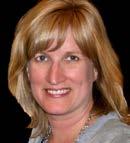
















BUY local Mez Mer Eyes Back to school! Free Lenses with the purchase of Anti-Reflective or Blue Protect Treatment Aug 1st - Sept 15. Some exclusions apply. 352-419-8999 352-795-2020 › Co-ed. 24-hour Club Access › Reciprocity at all Anytime Fitness Clubs 7DAY Guest Pass Limit one per person. First-time guests only. Must be at least 18 years old. No other discounts can be used with this offer. HOMOSASSA 5723 S. Suncoast Blvd., Homosassa (352) 503-6856 CRYSTAL RIVER 2010 SE Hwy 19, Unit 5, Crystal River (352) 794-6161 LECANTO 2668 W. Woodview Lane, Lecanto (352) 270-8868 Guest Name Phone/Email Referred By Dates Valid › Secure, Clean Environment › State-of-the-Art Equipment www.AnytimeFitness.com Captain Jim Farrior , U.S.C.G. Licensed & Insured FISH AND WILDLIFE ART Captjimfarrior@gmail.com 352-621-3190 • 352-422-1992 like us on Facebook! Member Homosassa Guides Association Fly Fishing & Light SpecialistTackle A personalized, artistic approach to Botox® Skin Innovations Spa Why Botox®? Botox® not only helps diminish wrinkles, it can be utilized to aid in wrinkle prevention as well. Botox® is temporary, making it a great option for those not ready to commit to more permanent solutions. at Richard C. Swanson, D.M.D., P.A. Botox® Treats: Crow’s Feet • Frown Lines • Worry Lines • Lip Lines Patient Comfort
Botox® treatment room is private, comfortable, soothing and meets the standards of the International Spa Association.
Unhurried, no-charge consultations
Careful evaluation and mapping of each patient’s facial structure
A customized treatment plan unique to each individual
Recommendations to achieve natural results
A spa-like treatment room with soothing music, green tea-scented gloves and aromatherapy Lynn Swanson, M.S., A.R.N.P. Advanced Registered Nurse Practitioner Member, American Academy of Facial Esthetics Member, International Spa Association Like us! (352) 795-1223 1815 SE Highway 19, Crystal River www.skinnovationspa.com FIND HEALING ... Christian Counseling Associates 1520 NE 14th Street, Ocala | 352.622.6292 Appts: M-Th 10am-8pm, O ce Closed Fri | www.marionbaptist.com FIND HOPE. Come to an Independent Pharmacy With a Personal Touch Free Home Delivery • We Match Competitor’s Pricing • Compound Customized Medications • Pet Medications • Free Med Pack Preparations • Free Medication Flavoring • Online Refills • Refill Reminders 1426 S. Pine Ave. Ocala, FL 34471 Ph: 352-622-3454 Fax: 352-622-3453 725 U.S. Hwy 466 Lady Lake, FL 32159 Ph: 352-633-2105 Fax: 352-633-2205 www.BenzerPharmacy.com Follow us on Facebook 13733 N. U.S. Hwy 441 Lady Lake, FL 32159 Ph: 352-391-5533 Fax: 352-391-5531 AUG ’16 › healthyliving magazines.com 15
Our
•
•
•
•
•










16 healthyliving magazines.com AUG ’16 Superior Residences at Cala Hills (352) 861-2887 2300 SW 21st Circle • Ocala, FL Superior Residences of Lecanto (352) 746-5483 4865 West Gulf to Lake Hwy. • Lecanto, FL Your Love... Our Expertise Call today to schedule a personal tour. TWO LOCATIONS Assisted Living Facility #9673 and #12256 We specialize in quality care and lifestyles for those afflicted with Alzheimer’s and dementia. Unlike other communities, we are licensed to care for them at every stage of illness. Lecanto and Cala Hills both offer separate neighborhoods for each stage of care—so this can be their home for life. Here families have peace of mind knowing their loved ones receive expert care in our secure, compassionate community. www.SuperiorALF.com • Art, Music and Pet Therapies • On-site Physical & Speech Therapies • Specialized Life Enrichment Programs • 24-Hour Nursing • Private Studio & Companion Suites • “Age-in-Place” ECC Licensed • Respite & Day Stay Options FEATURED BENEFITS *Offer good for one-time use by new families only. Purchase a 4-hour Day Stay at Cala Hills or Lecanto communities, get 4 hours free. Additional hours billed at the standard hourly rate. You MUST call ahead. Coupon required. Expires 9/30/16. BUY 4 HOURS – GET 4 FREE in our Day Stay program* Take full advantage of our Day Stay program benefits with 4 extra hours of Superior care for your loved one. Your favorite articles, on your favorite devices, every month, absolutely free We will never sell or share your information with anyone else. Scan the code Sign up on our Facebook page Want Healthy Living Magazine delivered directly to your email? 3 EASY WAYS TO SIGN UP Sign up at healthylivingmagazines.com MARION & CITRUS Inspiring A Healthier, Balanced Lifestyle
Diagnosing Dementia

A new smartphone game called Sea Hero Quest not only tracks spatial awareness, it helps doctors diagnose dementia.
The game asks players to set sail in search of artifacts that are in the form of memories. As you advance in the game, scientists are able to use generated data to gain an idea of one’s spatial navigation abilities, which is one of the first skills lost from dementia. A new patient is diagnosed with dementia globally every three seconds. With the help of this game, neuroscientists are hoping to not only spot the disease early but prevent it from worsening. The app is available for both Android and iPhone devices. (It looks fun, too!)

INSIGHT ADVICE SOLUTIONS HEALTHY PAGE 17 INSIGHT
Source: cnn.com
Medical Mistakes
Your appointments as well as your doctor’s diagnosis are extremely important; it can determine your next move. However, with medical errors being the third leading cause of death in the United States, it can sometimes be hard to trust your doctor’s opinion.


According to Dr. Martin Makary, professor of surgery and health policy at Johns Hopkins University, “People don’t just die from heart attacks and bacteria. They die from system-wide failings and poorly coordinated care.” These errors can’t be looked at as lapses in judgment or mistaken diagnoses; these are people’s lives on the line. With the number of deaths being at least 250,000 every year from medical errors, this issue needs to be addressed quickly.
Crucial Questions






Here are a few tips to help you get safer care.
› Make sure all your doctors know about every medicine you are taking. Keep an updated list, including meds and doses in your purse or wallet.
› Bring all medicines and supplements to your doctor visits.
› Make sure your doctor knows about any allergies you have.




› When your doctor writes a prescription, make sure you can read it. If you can’t read it, maybe the pharmacist won’t be able to either.
Your Job
› Ask questions about your medicine, and make sure the doc answers in terms you understand.
› If you are having surgery, make sure that you, your doctor and your surgeon all agree on exactly what will be done. Request a meeting beforehand.
› If given a choice, choose a hospital where many patients have had the same surgery.
› Speak up if you have questions or concerns. Always have a list of questions on hand before any appointment
or consultation. Take notes when the doc makes suggestions or discusses ways to improve your health or condition.
› Ask a family member or friend to go to appointments with you. Maybe they will think of a good question to ask or remember facts you might have missed.
› Learn all you can about your condition and treatments.
Take responsibility for your own health. We’ve heard it all before, but it’s worth repeating. Get plenty of rest, eat a balanced diet, reduce your stress levels and exercise regularly. In addition, make sure to schedule well visits and any required tests, including blood tests and other diagnostic tests, on time. Be informed and ready to ask questions!

18 healthyliving magazines.com AUG ’16
dose HEALTHY ADVICE
A doctor’s appointment is nothing like a hair or nail appointment. It can be scary and unpredictable, even if it’s only a yearly checkup.
• Inpatient and Outpatient Physical, Occupational and Speech Therapy (including vitalism)
• Specialty Cardiac and Orthopedic Rehabilitation

• Medicare and BCBS accepted






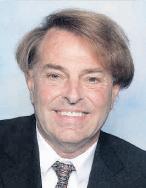
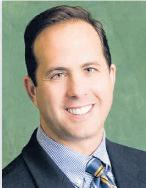
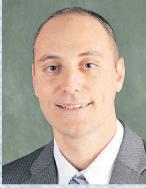

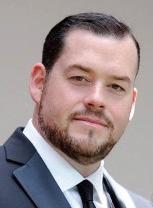






The Center for Bone & Joint Disease physicians are boardcertified and many have received specialized fellowship training in areas such as hand, trauma, spinal injuries, sports medicine, shoulder reconstruction, and advanced foot and ankle reconstruction. The Center also has a fellowship-trained podiatrist on sta .
Matthew Ragsdell, D.O., the Center’s newest full-time orthopaedic surgeon at our Homosassa location. He completed a fellowship in sports medicine and shoulder reconstruction where he received training in advanced arthroscopic techniques and advanced shoulder repair. He treats a wide variety of orthopaedic conditions that include total joint replacements, revisions and ACL, MCL & PCL reconstruction and revisions. Also specializing in anterior approach total hip replacements.
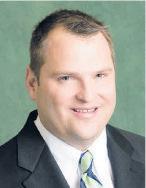
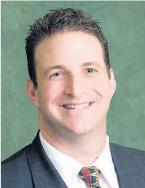
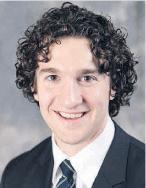

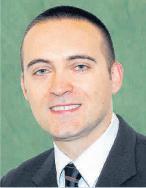
A great practice requires patience, attention to detail and an unwavering commitment to quality. Try us for yourself!







AUG ’16 › healthyliving magazines.com 19
THE CENTER FOR BONE
JOINT DISEASE 7544 Jacque Rd., Hudson 727-697-2200 10221 Yale Ave., Brooksville 352-596-0900 8281 S. Suncoast Blvd., Homosassa 352-597-2664
&
Care Credit Financing Available www.centerforboneandjoint.com
Jose
Gomez, MD
George
Kardashian, MD
Christopher
73143 PERSONALIZED SHORT-TERM THERAPY 352.873.7570 2800 Southwest 41st Street LifeCareCenterOfOcala.com Joint Commission accredited
Kirill Ilalov, MD Juan Raposo, MD Alexander Pappas, DPM
Craig
R. Bennett, MD Jared P. Salinsky, DO
Reyher, MD Steven P. Nadler, MD
What’s Good Bacteria Good For?
Thanks to their children, most parents are pretty familiar with the medicine aisle— what works for colds, upset tummies or coughs.
But when it comes to probiotic supplements, there are a lot of options and not much clarification on how they di er. Here’s what parents need to know about probiotics for their kids.

By now, most of us know probiotics are microorganisms that help keep our digestive systems on track. They’re found naturally in foods like yogurt, but supplements are the fastest way to repopulate the gut with good bacteria after, say, a round of antibiotics (a common occurrence for kiddos). And with a weak microbiome—all the microscopic organisms living in and on the body—being linked to conditions like asthma, type 1 diabetes, allergies and autoimmune diseases, probiotics are definitely worth some consideration.

However, when you find yourself standing in front of the probiotic section in your drugstore, it’s hard to actually consider which product is best for your child. Just like antibiotics, probiotics treat different ailments. The confusion arises because, for supplement brands to market their products with treatment claims and dosages, they’d have to engage in the same extensive testing as pharmaceutical drugs (which is expensive and takes forever, so they skip it).

Thankfully, there are some general guidelines for which probiotic strains are helpful and when. What kind of good bacteria are best?
Lactobacillus GG and Saccharomyces boulardii are the most studied strains. Research shows these probiotics can eliminate diarrhea about 25 hours earlier than usual during a stomach virus. With the average stomach bug lasting three days, that’s a full day of mercy. They’ve also been shown to halve the number of children who experience diarrhea while taking antibiotics. They’re found in Culturelle and Florastor, respectively.
Studies also show links between probiotics and reduced eczema flare ups, prevention of respiratory infections and decreased instances of colic in babies. Taking probiotics regularly may not be for every child, but parents who think their son or daughter could benefit from a few more microorganisms should ask their pediatrician’s advice.
Is Snacking Sufficient?
Yogurt, cheese, Kefir and more are all marketed as probiotic-populated snacks, so why bother with a supplement? A 2010 study found that after just 10 days in the fridge, 70 percent of the probiotic critters have died. Further research states food should contain 106 to 108 live cultures per gram, and no one can put away that much yogurt every day. Although these foods don’t hurt, supplements may just be worth the hype.

Note: Probiotics are not suitable for children with certain serious conditions, such as cancer. Always talk to your child’s pediatrician about supplement use.
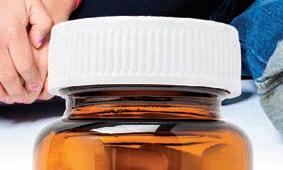
dose HEALTHY Sources: slate.com, webmd.com, parents.com INSIGHT
SOLUTIONS
The Stitch On The Itch
Backpack, pencils, paper… check. Lunch money, new shoes, lice… check? Let’s leave that last one off this year’s list, OK?
Sending kids back to school each fall is an exciting time. Coming home with a case of head lice? Not so much.
Head lice live close to the human scalp and move by crawling. They cannot hop or fly. Head lice spread through direct head-to-head contact with the hair of someone who has lice. Although more uncommon, head lice can also spread via hats, scarves, coats, pillows and other bedding, combs and brushes, and towels. An estimated 6-12 million infestations occur each year in the United States among children ages 3-11. Personal hygiene or cleanliness of a person’s home or school is not related to getting head lice.
Bye Bye, Bugs
The following are some tips for preventing head lice in the first place.



› Items such as hairbrushes, hair accessories, helmets and scarves should not be shared.

› Talk to children about not laying on carpet at school.


› Keep long hair tied up in ponytails, braids or buns at school.
› Use tea tree oil by adding five drops to the amount of shampoo normally used to cleanse your hair. Tea tree oil can dry your hair out, so use sparingly. Tea tree oil is said to repel lice. (Some people also report using tea tree oil as a natural method for getting rid of a lice infestation. A quick Internet search can lead to more information.)
Bugs Be Gone



Lice will not go away without being properly treated. As soon as symptoms of lice are noticed, treatment should begin. All family members should be checked for lice as well. Overthe-counter treatments are available (follow the packaging instructions carefully), and there are even professional lice-removal companies that can help do the deed for you. Visit liceclinicsofamerica.com to see if there’s a clinic near you. Once you’ve begun treating the person, it may be necessary to wash all bedding and clothing the infested person has recently been in contact with.
Lookin’ For Lice?
The following are symptoms of a lice infestation.
› Itching
› Lice bites
› Tickling feeling of something moving on your head, hair or body
› Irritability

› Di culty sleeping (head lice are most active in the dark)

› The appearance of small white objects in the hair that are di cult to brush out.

A form of lice that develops immunity to strong insecticides used in over-the-counter and prescription shampoos is becoming more prominent. In a Harris Poll of 2,000 U.S. mothers, about one-third said they were able to treat their child’s super lice infestation with just one application of an over-the-counter product. Sixty-eight percent reported that treatment required two or more applications or that no over-the-counter treatment resolved it.

Sources: webmd.com, health.com, cdc.gov
dose HEALTHY AUG ’16 › healthyliving magazines.com 21












Local Foster Parents heart speak from the “There are children who need your help.” “ you can help an older child and their siblings for a lifetime.” “Every child deserves a chance.” KidsCentralFosterParents.org 352-873-6332 Kids Central, Inc. is the nonprofit organization charged with preventing and treating child abuse and selected by the State of Florida to coordinate child protection services in Citrus, Hernando, Lake, Marion and Sumter Counties (Circuit 5). No person shall be discriminated against on the basis of race, color, religion, sex, age, national origin, disability, sexual orientation, martial status or any other characteristic protected by federal, state or local law. Funded via Cooperative Agreement with the U.S. Department of Health & Human Services, Administration for Children and Families Federal Opportunity Announcement, Diligent Recruitment Families for Children in the Foster Care System: HHS-2013-ACF-ACYF-CO-0593. Award #: 90C01112-01-00 Hundreds of abused, abandoned and neglected children in Citrus and Marion Counties need a safe, loving home. These foster and adoptive parents had the heart to help. do you? change a life for good Foster or Adopt an Older Child
Faith In Action
Many people in our community live their lives based on a deeply felt faith—“the substance of things hoped for, the evidence of things not seen” (Hebrews 11:1). Such faith allows people to see possibilities where others perceive only problems, to believe that blessings can be born of even the most trying times. It gives the confident assurance that all things serve a higher purpose, both here and hereafter. And it allows ordinary people to do extraordinary things.
For hundreds of children in Marion and Citrus Counties, their futures depend on the faith of others. These children have suffered trauma, abuse and neglect. They need safe foster and adoptive homes where they can be shown a loving way of life they have not seen but have long hoped for. The greatest need is for people to step out in faith for children ages 9 to 15, the critically formative years when we build our foundation for life.

What action does my faith require?
That is the key question that all faithful people must ask themselves, because
as the Bible tells us, “faith without works is dead” (James 2:20). For those with sincere religious beliefs, one of the greatest opportunities to put their faith in action is to provide a home for a child who has suffered. As one local pastor put it, “Foster parenting and adoption are acts of God’s love to those who have not been loved.”
Those of us who are a part of the faith community must understand the Biblical mandate to care for others, especially children who find themselves in distress. Our faith compels us to love and nurture those who have nothing to give in return. This mandate is not defined by age or life situation, and it includes children who may be older or may seem to be more challenging. These young people need to know that their lives have meaning and purpose. What greater reward could there be than knowing that you helped restore hope in a child who has lost all faith in the future?
Are you called to foster or adopt? How can you come alongside and provide support for those who are called to foster or adopt? Not everyone is called to do the same thing, but if our faith is strong, it will drive us to consider what role we must play in meeting this great need.
Please at least explore what role you are called to fill in the life of a child. Call Paula Mealy of Kids Central, Inc. at (352) 387-3487, or email her at Paula.Mealy@KidsCentralInc.org. For more information, you can also visit KidsCentralFosterParents.org



Kids Central is the nonprofit lead agency charged with caring for the abused, neglected and abandoned children in Citrus, Hernando, Lake, Marion and Sumter Counties.







AUG ’16 › healthyliving magazines.com 23
KIDS CENTRAL, INC. › 2117 SW Hwy 484, Ocala › (352) 873-6332 › kidscentralinc.org
PROMOTIONAL FEATURE
Kids Central workers and volunteers answer the call to care for local children.
K i TCHEN in the K i DS











































For the vast majority of students, high school is a time of exploration and discovery. Some have an idea about what they’d like to do for work, but it takes a student with unique drive and dedication to already have a clear direction about a future career at this age.


Ah, but when they do have a plan, it’s both refreshing and inspiring to hear their stories. We caught up with three remarkable teens who have found their place in the kitchen at an early age and have definite plans to make careers in the culinary world.
By Cynthia McFarland
24 healthyliving magazines.com AUG ’16
iWiSSi QUAN LL i AM






























































































For Siquan William, cooking is synonymous with happiness, and that’s reason enough to be in the kitchen. Raised in Summerfield, the 15-year-old Belleview High School student will be a sophomore this year. The third of four children, Siquan has long associated happy times with the kitchen and food.

“My mom has always cooked a lot, and when I was younger, I got excited about that and tried to help her,” he recalls, adding that he loves his mom’s baked pork chops. With that inspiration, Siquan began cooking for his family because he saw it made them happy. The food-equals-good-times connection took hold at an early age.
And although he likes to cook, he likes baking even more. He enjoys working with yeast dough and makes his own pizza dough. However, cakes are his specialty. He’s made chocolate, strawberry and red velvet, but his vanilla cakes are hands-down the best.
“They’re like the ones you’d get at a bakery,” he admits modestly. And yes, he makes a mean buttercream frosting. Although many recipes call for margarine, Siquan says butter makes for a better frosting.

Speaking of recipes, you’ll often find Siquan online searching for new ones. He likes finding a recipe that sounds appealing and then making the dish with just enough of a change to call it his own.



“I like creating new recipes at home to see how they turn out,” he says.



Although he’s been cooking at home for years, Siquan first got interested in culinary pursuits at school in seventh grade. He’s been involved in the Academy of Culinary Arts at Belleview High School since his freshman year.

“Siquan has a passion for cooking, and he really enjoys the avocation. He would come to my class after he finished his work in other classes and play in the kitchen and work with others,” says Chef Darin E. Nine, director of culinary education.
“He is one of our ‘egg flippers’ in our Breakfast Class, which is open to BHS faculty, staff and to the public, as well, with a reservation. We serve our famous ‘Sammies,’ omelets, pancakes, biscuits and gravy, and the best cup of coffee in Marion County. He has honed his skills in making omelets, eggs over-easy, medium and hard. It sounds easy, but when you have 15 tickets running, you better be focused and alert. And because eggs cook quickly, he has to coordinate his eggs with the Sammie station and the pancake station, so all the food on the same ticket comes out at the same time.
“Siquan is very focused, and that lead me to ask him to be on my SkillsUSA Competition Baking Team,” adds Chef Nine. “He and his team won a bronze medal in entrepreneurship at the Florida SkillsUSA State Leadership and Skills Contest in Lakeland. They had a great business idea and really performed well as a team.”
“Chef Nine teaches us about more than just cooking,” says Siquan. “He taught us how to do a résumé and other things we’d need to know for business.”
Aside from time spent in the culinary program, Siquan tries to invest a few hours each week at home cooking and baking. When he’s not in the kitchen, you can find him involved in sports. Siquan runs track, competing at 100-. 200-, 400- and 800-meter distances.
None of his friends tease him about being a jock who likes to cook. Instead, they’re more than willing to sample the various things he makes. All of his friends and family are “super supportive” of his culinary interests, he adds.

Siquan is very focused, and that lead me to ask him to be on my CompetitionSkillsUSA Baking Team.
AUG ’16 › healthyliving magazines.com 25
— Chef Darin E. Nine
Chef Jason Benavides, Jenna’s instructor in the Culinary Arts & Baking Academy. “So much so that I requested she be transferred into my advanced service class the first week of school. I’ve never regretted the decision. She is a hardworking, dedicated young lady who knows what she wants and will do whatever she has to in order to achieve it. I wouldn’t be surprised to see her name on the list of top bakers in America in the future.”
“Food is one of the few things I’m really good at and have a talent for, but that could be because I’ve had a lot of practice,” says Jenna, who is known for her amazing cookies. When the culinary students send their cart around the school for students and staff to buy from, everyone looks for Jenna’s cookies.
“My favorite to make is probably snickerdoodles,” she says. “My grandmother did a lot of baking with me and my sister when we were little. She used to make these cookies for us, so the recipe is sentimental to me.”
Although Jenna likes to cook, she’s actually more of a baker. In addition to cookies, she loves making yeast breads and cinnamon rolls.




a big fan, especially when she’s making homemade ice cream.
“My family has been extremely supportive since I’ve started at the Culinary Arts & Baking Academy,” says Jenna. “They’re always asking what I’m making and definitely think I can be successful at this.”





Many 17 year olds have only vague ideas about what they hope to do for a career, but not Jenna. She already has a plan.
“In the next 10 to 20 years, I would like to have my own café or bakery, probably on the West Coast somewhere,” she says. “But before I do that, I want to work my way up through different bakeries and businesses. I want to know about business before I own one!”
If every high school senior had that kind of maturity and eye for the future, our country would be in very good hands.

MTI, I could tell right off the bat that she was gi ed. So much so that I requested she be transferred into my advanced service class the fi rst week of school.
26 healthyliving magazines.com AUG ’16
— Chef Jason Benavides


































































































I did watch some cartoons, but my favorite thing was to watch cooking shows on television and look up cooking videos online.
AUG ’16 › healthyliving magazines.com 27
— Jenna Bush































28 healthyliving magazines.com AUG ’16
I have dwarfi sm, so that alone is a challenge. I’m
JORDAN BOULER i CE











When September 6 arrives, Jordan Boulerice will officially begin his college culinary studies at Johnson & Wales University at their North Miami campus. But he’s been at home in the kitchen since he was just a boy.
Jordan got his first taste of restaurant work flipping burgers in a family restaurant owned by friends. It didn’t take long for him to develop a passion for food and to realize he wanted a career in the culinary world.
Jordan, 18, graduated from Lecanto High School this past May, where he went through their culinary arts program.
“Ms. Sheffield, my culinary teacher at school, helped me focus on what I want to do,” he says. “I have dwarfism, so that alone is a challenge. It’s not every day you hear there’s a ‘short person’ in the kitchen. I’m determined to open the door for other people with physical and mental challenges.
“Because of my physical stature, I’ve learned you shouldn’t limit yourself. You need to believe you can do whatever you want, whether in the kitchen or another field. Even though I can’t reach certain things, there will always be people in the kitchen who can help out.”
Jordan’s determination and talent have been rewarded. He’s received two different scholarships and a grant from Johnson & Wales. He plans to start with an associate degree in baking and pastry and then possibly go on to get an associate degree in culinary management.
“I’d like to own my own bakery or have a food truck that focuses on bakery items and pastries. I’ve done a lot with baking and pastries at school since my sophomore year,” he notes.














“I’ve taken French in high school; I appreciate that culture and how they have a passion for baking and pastries. I would like to go to France for my internship and see how I can learn more. I’d like to bring some of that passion here and expand on it. Because I’ve just been taking French, it will be fresh in my mind.”
Jordan’s interest in cooking and baking began when he was very young, watching his great-grandfather in the kitchen.



“He was also a baker,” recalls Jordan. “I was kind of his guinea pig; if he made something and I ate all of it, that meant it was good!”
Today, Jordan uses some of his great-grandfather’s recipes, including his carrot cake, which is one of Jordan’s favorite things to bake. He also likes to bake for his younger sister.

In addition to his great-grandfather, Jordan counts Chefs Robert Irvine and Gordon Ramsey among his greatest inspirations. He enjoys watching shows on Food Network and the Cooking Channel; among his favorites are Chopped and The Pioneer Woman
“I follow a lot of food pages on Facebook,” says Jordan, who likes to take some of those ideas and come up with his own twists on recipes. “I’m into molecular gastronomy,” he adds.


“Jordan has gone through all four levels in our culinary arts program. Lecanto High School is a Premier ProStart School, of which there are only 17 in the state,” says Suzanne Sheffield, the culinary arts instructor at Lecanto High School. “ProStart is the curriculum created by the National Restaurant Association that teaches the students and makes students work-ready in what the industry needs.”
Sheffield, who trained at Johnson & Wales University, has been teaching since 1980, when anything to do with cooking in the schools fell under the category of “home economics.” She’s delighted with how things have changed over the years and is proud to have taught a number of students who are now professional chefs, cooks and restaurant owners.
“Jordan will be the next chef who’s gone through our program,” she says. “One of the most exciting things for me is when former students who are now in the culinary industry come back to visit and mentor the class.”
One day in the future, she won’t be surprised to see Jordan return to do just that, ready to encourage and enlighten a new era of aspiring young chefs.
In honor of helping kids hone their cooking and baking skills, we’re giving away two Deluxe Cooking Kits, one for ages 3 and up and one for ages 6 and up, courtesy of Playful Chef by MindWare. You can win one of these sets by visiting the Ocala Style Facebook pageLiking(facebook.com/ocalastyle), the page and then staying tuned for details on how to enter to win.


Jordan has gone through all four levels in our culinary arts program. Lecanto High School is a Premier ProStart School, of which there are only 17 in the state.
— Suzanne She eld READY, COOKSET,
SICKNESS SYLLABUS































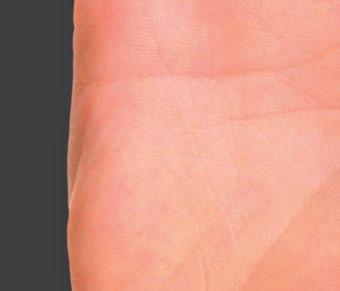





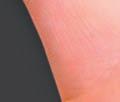







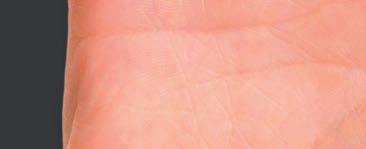


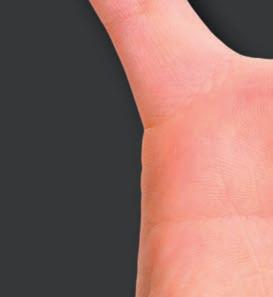


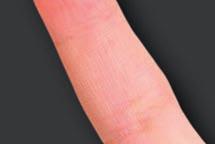


















































 ByKatieMcPherson
ByKatieMcPherson


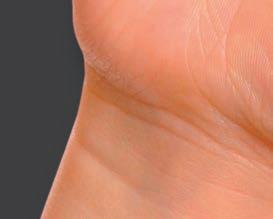




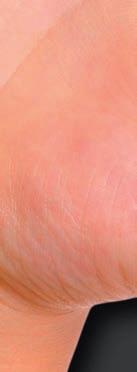


30 healthyliving magazines.com AUG ’16
EachAugust,kidsofallages head back to school after summervacation.They’ve gottheirnewbackpacks loadedwithsharppencils, plentyofnotebookpaperand, accordingtotheUniversity ofColorado,anaverageof 332,000differentkindsof bacteria on their hands.











Pre-K & Kindergarten Prep
Bad news first: Your child will get sick from school.

The average child entering kindergarten will have eight to 12 colds and one to two diarrheal episodes in one school year alone. All parents know this is the age when children’s immune systems start taking their first major hits and will hopefully build up over time. But in the name of being prepared, what is your child most likely to come home with?


So how can you keep your children healthy, whether they’re still finger painting or driving themselves to school? Here’s the rundown on sickness this school year.


strikes most
Sinus and the














































































































One of the most common illnesses for young children is bacterial conjunctivitis. That’s right—the dreaded often in preschool and kindergarten classrooms. It’s caused by the same viruses and bacteria as other colds and infections and is typically spread by touching eyes with contaminated hands after touching something used by another infected child. infections are also guaranteed to strike at an age where hands are used as tissues and toys and crayons are communal. The same goes for gastroenteritis also known as the stomach bug.



> AUG ’16 › healthyliving magazines.com 31
Of course, before your little scholar sets foot in school, they’re going to need a few vaccinations. According to FloridaHealth.gov, here’s the list of shots preschoolers and kindergarteners need:
Public And Non-public Preschool Entry Vaccinations:
Boosting Your Babies’ Immunity
• DTaP (diphtheria, tetanus, pertussis)
• IPV (polio)

• MMR (measles, mumps, rubella)
• Hepatitis B






• Varicella


• Hib
Public/Non-public Schools
Kindergarten Through 12th Grade
(Required for children entering, attending or transferring to Florida schools)





• Four or five doses of DTaP
• Four or five doses of IPV





• Two doses of MMR
• Three doses of Hepatitis B
• One Tetanus-diphtheria-acellular pertussis (Tdap)














• Two doses of Varicella unless there is a history of varicella disease documented by a health care provider
flu vaccine is not required by most pre-K and kindergarten schools, it’s currently recommended for everyone 6 months and older. Serious flu complications typically only occur in children under 2, but an estimated 20,000 kids ages 6 months to 5 years are hospitalized with the flu and its complications each year. Children with chronic health problems like asthma or diabetes are at a higher risk for developing complications. Be sure to ask your pediatrician if the flu vaccination is right for your child.
Even daycare veterans’ immune systems won’t win every battle. How can you keep your child healthy among the army of little nose-pickers at school?
1SERVE THEM AS MANY FRUITS AND VEGETABLES AS POSSIBLE. Ideally, they should eat five servings a day, (two tablespoons for toddlers and one cup for older kids). Focus on foods rich in phytonutrients, like carrots, strawberries and oranges—studies show they increase production of white blood cells, which fight viruses.
2GET THEM TO BED. Preschoolers need an average of 10 hours of sleep each night, but some may struggle to nap at school surrounded by playmates and activity. If your child is one of them, get them to bed in time to get 12 or 13 hours so their bodies can stay strong.
3PREVENT GERM SPREAD BY WASHING




HANDS, OF COURSE. Get kids more excited about the routine by letting them pick out soap in fun shapes and scents. Also, if a child falls ill with a bacterial infection (think strep) they can reinfect themselves later, so toss their toothbrush. Even if it’s viral, the germs can easily brush hop, so replace their brush if only to defend everyone else’s.
Elementary Illness



























There’s no crazy vaccine list this time—parents probably have their hands full with the elementary school supply list as it is. That said, there are some new sicknesses on the block, but you can add a few more bacteria-busting tactics to your child’s wellness arsenal, too.
Anywhere from 6 million to 12 million cases of lice are reported in children ages 3 through 11 each year, more often in girls. They’re transmitted via head-to-head contact while playing. It’s less common for lice to travel on shared hairbrushes, clothing, hats, earphones, etc., but it’s still a
32 healthyliving magazines.com AUG ’16
good idea to have your child keep their above-the-neck belongings to themselves.
Strep throat also occurs most commonly in children, as it’s spread by sharing food and drink, airborne droplets from an uncontained cough or sneeze and touching doorknobs or surfaces shared with those already infected. Strep bacteria typically circulates in the fall and early spring, and it loves to make its way around groups of people in close contact (i.e. classrooms). Be sure to keep your child’s teacher stocked on hand sanitizer, and make sure your children have all the supplies they need to avoid borrowing a pencil from a sick neighbor or touching the community sharpener.
As always, the common cold will be back for a few more bouts this year. Most students average three to five colds each year.

Listen Up, Kids N

Wash hands with soap and water for 20-30 seconds (sing a song if counting is boring!), especially before it’s time to eat snacks or lunch. If they can’t get to a sink, rub hand sanitizer all over and in between fingers for 30 seconds until dry (more singing here, of course).


Avoid touching the face with unwashed hands throughout the day.


If they know a classmate is sick, try to avoid touching their desk and belongings.
Avoid close contact like kissing, hugging, close proximity games and sharing food with other children.
Time for Germs 101. Teach children not to touch their mouths to water fountains while drinking and not to eat food that has dropped from their plate onto their cafeteria tray or table. In 2005, a study of germs in schools discovered plastic cafeteria trays and


ow that the kiddos are old enough to remember, try discussing some tips for fighting germs while they’re at school.
W�s� h�n�s w�t� s�a� a�d w�t�r f�r 2�-�0 s�c�n�s
AUG ’16 › healthyliving magazines.com 33
2�7�0�0�0 b�c�e�i� p�r s�u�r� i�c� o� t�e s�i�o�
water fountain spigots are the most germridden parts of any school with 2,700,000 bacteria per square inch on the spigot and 33,800 on the tray. If your kids don’t take this lesson seriously, tell them there are 3,200 bacteria per square inch on a toilet seat for comparison.
P�o� & C�n� O� P�o�i�t�c�
Immunity is the biggest reason parents purchase probiotic supplements for their families, but in 2010, the American Academy of Pediatrics released a clinical report stating that it’s unclear how e ective these supplements may be. Also, the FDA doesn’t approve probiotic supplements before they’re marketed as they would with medicines, and there are a multitude of brands on the shelves to choose from without much information about how they’re di erent.
Although no studies have been done proving their e ectiveness, probiotic supplement use stems from research showing a link between a healthy GI tract and a strong immune system. They also pose no threat to health. There are several di erent strains of probiotics available, with Lactobacillus GG being the most thoroughly studied (it’s used in the popular brand Culturelle).


In short, taking a probiotic should theoretically strengthen your child’s immune system. There may not be any science to back it up just yet, but hey, it can’t hurt.
Middle School Immunity
This transition is easier than others, too, as only one shot is needed before the first day.

REQUIRED TO ENTER
7TH GRADE: TDAP (Tetanusdiphtheriaacellular pertussis)





SHUT DOWN SHARING









The same old colds, streps and infections will keep coming around in middle school, but a few new varieties may crop up at this age thanks to P.E. class and puberty. All those lessons about sharing is caring? Tell your middle-schooler to forget it, at least when it pertains to personal items and locker room necessities. Besides food or drinks, students should not share lip balms, makeup, razors, shaving creams or lotions to avoid skin infections like MRSA and herpes. These can also spread on ear buds, locker room towels, sports uniforms, helmets and gloves.
GARDASIL: NOT JUST FOR GIRLS

It’s not fun for parents to think about, but



this is the age when sexually transmitted infections become part of your child’s health equation. Young people ages 15 to 24 represent 50 percent of new cases of the human papillomavirus (HPV) each year. It can lead to genital warts and, in girls, even cervical cancer.

Gardasil, the HPV vaccination, is recommended for girls and boys ages 11 through 26 who have not been exposed to the human papillomavirus. Gardasil protects against 90 percent of genital warts cases, 70 percent of cervical cancer cases and 70 percent of vaginal cancer cases.


























The CDC recommends vaccinating boys and girls between ages 11 and 12 before exposure to HPV, but anyone 13 through 26 who has not yet been vaccinated or exposed should also ask their doctors if Gardasil is a good choice for them.
PESKY BIRDS, STUPID BEES

We know having The Talk with your son or daughter sounds as pleasant as pulling out your hair, but the time has come. (While middle school might seem a bit early, we say the sooner the better. You can bet that if you don’t talk to them about sex and their changing body, they’ll get info—likely wrong info—from their friends or the Internet.) If teens can’t be trusted to wash their hands, matters of STDs and STIs should not be left to chance. Impress upon your middle-schooler the dangers of unsafe sex, and talk frankly about their options for protection.

34
It’s sad to see them getting older, but without playing tag at recess and sharing crayons anymore, middle-schoolers are less likely to come home sick than younger children.
AUG ’16
M�S� a�d h�r�e�
c�n s�r�a� o� e�r b�d�, l�c�e� r�o� t�w�l�, s�o�t� u�i�o�m�, h�l�e�s a�d g�o�e�.
Hello, High School






















Classes and extracurriculars may start piling up, so parents, be sure to stay in tune with your child’s stress levels. Sharing stress management techniques may help highschoolers handle this new level of responsibility and keep their immune system strong as a result. As always, keeping the fridge stocked with healthy snack options is beneficial, too. Oh, and there’s one new sickness on the radar.
Mononucleosis crops up most in people ages 15 through 17, and while it’s not terribly common, the symptoms can last for months. It’s known to be spread through kissing but can also travel on shared utensils, drinks, lip glosses or anything else that touches the mouth, so kindly request your teens keep their saliva to themselves.


HYGIENE IN HIGH SCHOOL
By this point, we all know washing hands is important to prevent sickness. That is, everyone knows it except for those stinkin’ teenagers. WebMD.com references a study that found only about half of high school students wash their hands after using the bathroom, and of those, only 33 percent of the girls and a gross 8 percent of the boys actually used soap. Send your teen to school with a mini hand sanitizer for their own convenience, and try to impress upon them that the importance of hand washing didn’t end in pre-K.
Off To College
a surefire way to increase exposure to illnesses of every severity. Living in a dorm compounds those chances, as tight quarters are a given. How can new students stay healthy?

The CDC recommends that first-year college students living in residence halls receive the meningococcal conjugate vaccine or get a booster shot if they had it before their 16th birthday to be safe. That’s because meningitis thrives in community spaces just like dorms and is most common in adolescents and young adults. It’s spread by saliva, living with a contaminated person and even breathing air where someone with meningitis has been. It’s easy to see why numerous campus outbreaks have been reported in recent years.





















DORM DOS AND DON’TS
How can your college student keep sickness at bay while living in a dorm?
1DON’T LEAVE TOOTHBRUSHES, TOWELS OR OTHER PERSONAL ITEMS IN THE BATHROOM WHERE GERMS MAY CRAWL ONTO THEM (or less gracious neighbors may use them).




2DON’T SHARE UTENSILS OR DISHES, ESPECIALLY WITH SOMEONE WHO IS CLEARLY SICK.






3STAY CURRENT ON VACCINATIONS. This keeps individuals safe and gives illnesses one less person to use as a transmission vehicle. Many schools include health fees in tuition, so ask the student health center about vaccinations included in that cost— the annual flu shot may already be paid for.
4STUDENTS SHOULD KEEP PERSONAL SPACE CLEAN AND DISINFECT DOORKNOBS AND SHARED SURFACES FREQUENTLY.

5MOM AND DAD, MAKE SURE TO STRESS THE IMPORTANCE OF EATING WELL, PRIORITIZING SLEEP AND MANAGING STRESS NOW THAT YOUR KIDDO IS IN CHARGE OF HIS OR HER OWN IMMUNE SYSTEM. Oh, and toss some travel-size hand sanitizer into those care packages!

AUG ’16 › healthyliving magazines.com 35
Going to school with thousands of other people is
Sources: cdc.gov, cchealth.org, parents.com, foxnews.com, webmd.com, kidshealth.org, ask.com, gardasil.com
Keeping It All In Line



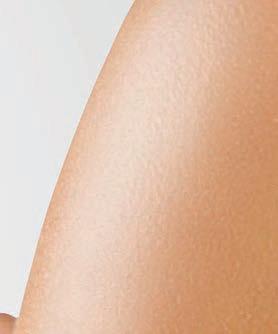
How chiropractic care plays a role in the health of your spine.















 By Cynthia McFarland
By Cynthia McFarland
f you’ve never had back pain, you should consider yourself fortunate. Or it may just be that your time
has not yet come.
Approximately eight out of 10 Americans experience back pain at some point. Back and for sick leave in the workplace.
neck pain are among the most common reasons








“Neck pain, back pain and headaches are the most frequent complaints in a problems are attributable to muscle or ligament strains, there are cases with or degenerative joint disease,” notes Robert A. Hayden, DC, Ph.D., FICC, Chiropractic Association (ACA).
chiropractic office. While sometimes these
more serious causes such as disk injuries




who practices at Iris City Chiropractic Center in Griffin, Georgia and is also a media spokesperson for the American
The Big Picture
It’s easy to ignore the health of your spine when you don’t have back pain, but you may not realize your spine and nervous system
play into your overall health—and not just when it comes to walking.

“The nervous system is the control


and spinal cord, and the peripheral nerves take information to and from our body parts from the















“This information includes, for example, control of circulation, movement, digestion and influence on the immune system,” Hayden continues. “It constantly
mechanism for the body,” explains Hayden. “The central nervous system is composed of the brain monitors input from the environment through our senses and reacts appropriately to maintain the delicate balances required for stable metabolism. The nervous system is truly
marvelous. King David said it well: ‘We are fearfully and

and the back bone connected to the neck bone...”


You may dismiss that old ditty as just a silly childhood
song, but it contains an important kernel of truth:

























































































37
When something goes wrong in your spine, numerous areas of your body can be affected.

Hayden points out that proper alignment may prevent or impact systemic problems. For example, alignment issues in the neck and upper back may affect breathing in the upper airways or in the lungs if the thorax does not move properly.
Your gastrointestinal tract also has important ties to your spine. Thoracic nerve roots come out of the mid back and coalesce to form important nerves that actually control the GI tract.
“One of our patients endured a very expensive medical workup to track the source of his right upper abdominal pain that revealed nothing significant,” Hayden recalls. “When he returned for chiropractic care, we found a thoracic disc herniation that was causing the radiating pain to the abdomen. This was an interesting case because gastric reflux produced a chronic cough, and the cough herniated the disc. The nerve squeezed by that herniated disc caused his abdominal pain. That is an interesting chain of events but not unusual. Every patient’s situation is like a mystery novel waiting to be read and solved.”
Help For What Hurts
There are typically two causes of pain originating in the spine: nerve and disc.
When a disc has degenerated, the disc itself is painful. In other cases, a nerve may be pinched or irritated as a direct result of damage to a disc, and because a nerve is involved, the pain can radiate out to other areas of the body. Your health care provider can help determine the exact cause of your pain and what treatment is recommended.
Hey, Doc, What’s That Noise?
When joints are adjusted, sometimes there is an audible sound. (You’ve heard it when you crack your knuckles.) Chiropractors refer to this noise as “cavitation.”
There’s no need for concern. Adjustment can change the pressure within the joint, and any sound you hear is caused by the release of tiny gas bubbles between the joints.
There are many different injuries and conditions that may be helped by chiropractic care, from lumbar spinal stenosis and sciatica to whiplash and herniated discs.
Each year, some 30 million Americans turn to chiropractic care, and no, you don’t need a medical referral. Doctors of chiropractic are educated as primary-contact health care providers, with an emphasis on diagnosis and treatment of conditions related to the musculoskeletal system (the muscles, ligaments and joints of the spine and extremities) and the nerves that supply them.
“Most people consult us with a pain problem,” says Hayden. “A doctor of chiropractic will use the same knowledge base and diagnostic tools as our medical colleagues but with a very different approach to treatment that is drug-free, non-surgical, safe and effective.”
Although it’s often pain that drives a person to seek chiropractic care, how does the chiropractor know where adjustment is needed?
“Pain is like a rattle in a car. It tells you something is wrong, but it is not necessarily specific,” notes
Hayden. “Chasing pain can be frustrating because sometimes people hurt in places remote from the cause.”
The chiropractor takes the patient’s history, including this specific complaint and other parts of the medical history. A careful examination will include multiple body systems, and imaging may be necessary to complete the picture. All of that together leads to a diagnosis, and that guides the chiropractor toward specific therapy.
Let’s say you seek out a chiropractor because of frequent headaches. Those headaches may be related to alignment issues in the neck, alignment issues of the skull or they may be totally unrelated to musculoskeletal issues. The answer will be found via your patient history, physical exam and imaging, allowing the chiropractor to know precisely where adjustment is needed.
Seeking Relief
Chiropractic adjustment is a carefully controlled procedure that manipulates the body’s joints, in particular the spine. This can reduce pain and helps resolve inflammation of joints. Depending on the nature of the problem and whether it is acute or chronic, a patient may need several adjustments over a period of time.

Chiropractors aren’t limited to just using their hands for adjustments. There are many chiropractic techniques, some of which involve the use of devices and machines.
“Some doctors use activators, which are handheld devices that impact bones very lightly and very quickly,” says Hayden. “Some use special tables, such as flexion distraction or decompression, to affect pressure inside intravertebral discs. There are several
38 healthyliving magazines.com AUG ’16
physiotherapies at our disposal, including numerous electrotherapies, ultrasound and infrared light, all of which can be used as adjuncts to support soft tissue, along with the adjustments.”
In some cases, a misalignment is causing the pain, so adjustment brings immediate relief.
An adjustment may also release endorphins, which are the body’s natural painkillers that are embedded in our tissues. Adjustments of the thoracic spine probably also release epinephrine, which is made in nervous tissue surrounding the thoracic spine.
“I have a patient who is a recovering heroin addict,” relates Hayden. “Heroin and our own endogenous endorphins ‘tickle’ the same opiate receptors in our brains. When I do thoracic adjustments for that gentleman, he nearly goes unconscious as the endorphins hit his brain, which is screaming for stimulation after being exposed to heroin
in his youth. He states that this adjustment feels like when he ‘shot up.’ It is not that his endorphins are more powerful than ours, but he is more sensitized than most people and reacts very strongly.”
If you have a physical job, you may want to consider seeing a doctor of chiropractic before you run into back problems. Athletes, for example, often seek chiropractic care.

“Right now 28 professional baseball teams and all 32 professional football teams have chiropractors maintaining finely tuned athletes,” remarks Hayden. “As chiropractors optimize a patient’s structure by adjusting the spine and extremities, there is a direct improvement in function that is reflected in performance.
“I have some high school athletes who come to see me before a big game. After adjustment of the spine and extremities, they report better speed and agility. The whole team appreciates that!”
Take Care Of Your Spine!
Have a desk job? Use a chair that o ers ergonomic support, ideally with your knees slightly higher than your hips to maintain the natural curve in your lower back.
Don’t slouch. Adjust your computer monitor to look directly at it, not up or down.
Take regular breaks: Get up, stretch and walk around.
Have a physical job? Never twist while lifting something. Pick up heavy items by kneeling on one knee close to the item with your other foot flat on the floor, or bend at the knees and squat. Lift with your leg muscles, not your back muscles.
Learn More American Chiropractic Association
acatoday.org/patients
Click on “Find a Doctor” to locate a doctor of chiropractic in your area.
Sweet dreams. Sleeping on your back puts significantly more pressure on your spine than sleeping on your side. Better to sleep on your side with just enough pillow to keep your head level. Hug a body pillow so your upper arm and knee are supported by the pillow.
AUG ’16 › healthyliving magazines.com 39
“Chasing pain can be frustrating because sometimes people hurt in places remote from the cause.”
—Robert A. Hayden
Our wellness evaluations show the exact point you decided to take control of your health. Find out your total and visceral body fat, bone density and metabolic age. We can design an easy program for you to follow to obtain your weight and fitness goals. Weight management gets you the proper nutrients into your body instead of empty calories. Call or come by today and receive a no-cost evaluation. Christina is glad she did, and you will be, too!



























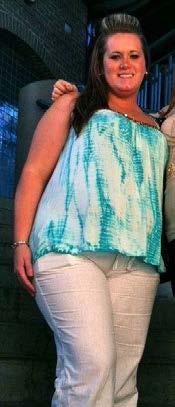


40 healthyliving magazines.com AUG ’16 Next Gen Nutrition Susan Griffin 352-598-3340 susangriffinbanker@gmail.com Christina Griffin 352-789-7064 christina@nextgennutrition.club Like us! HEALTH COACHES • BEAUTY • HEALTH • WEIGHT MANAGEMENT 1701 SE Fort King Street, Ocala, FL 34471
When do you want to start feeling and looking better? Christina ‘CeCe’ Griffin BEFORE...DURING... People who use Formula 1, twice a day as part of a healthy lifestyle can generally expect to lose around half a pound to 1 pound per week. Dietary supplement product. Consume only as directed, one time per day. N rish Y r Skin Fr Within Herbalife SKIN® Collagen Beauty Booster SOUTHERN PINES 1 SOUTHERN PINES 1 SOUTHERN PINES 1 A PHASE CONDOMINIUM "FLORIDA'S HOME BUILDER" of Central Florida HOMES DELTONA by 352.593.5964 fax: 352.593.5965 8075 Southern Pines Dr. Brooksville, FL 34601 is private, gated, luxury community in Historic Brooksville offers: ≥ A 6,800-sq.-ft. clubhouse, located in the center of the community, includes a fully equipped health and fitness center, and outdoor & indoor heated pools and spas ≥ Convenient undercover garage parking & elevator allow homeowners easy & safe access ≥ Beautifully landscaped, maintenance-free living ≥ Two staged models by POTTERY BARN® ≥ Models open daily deltona.com | southernpinescondos.com Prices starting at $180,000
Chew On This
The reason? To encourage shoppers to make healthier eating decisions. Here’s how they plan on doing it. Some changes include:
› Bolder font, making it easier to see how many calories you’re consuming

› Clearly listing how much sugar is added to the food

› Specify what a serving size is, and define “serving size” itself to better fit what the average person eats
› Prioritize what Americans need more of in terms of vitamins





› Supplement labels will also be updated to reflect the new changes

NUTRITION FITNESS BEAUTY HEALTHY PAGE 41 Source: news.ufl .edu NUTRITION
The FDA recently announced that the labels on the food you buy are going to change within the next few years.
Muscle
Malfunction
The P.R.I.C.E. Is Right
You’ve likely heard of the R.I.C.E. method for dealing with injuries, but builtlean.com recommends adding in another step—protect—to remind you to stop using the injured muscle.

PROTECT: Stop doing whatever strained your muscle in the first place to protect it from further injury. (Put down the weights, my friend.)
REST: Lay low for two or three days. If the pain persists, see your doctor.
ICE: Apply ice to the area while you’re awake for 20 minutes every couple of hours for the first day or two.
COMPRESSION: Wrap the pulled muscle with an elastic bandage, like an ACE bandage, to provide support. Just don’t wrap it too tight.

ELEVATE: Keep that pulled muscle propped up higher than your heart to keep the swelling down.
Reach for anti-inflammatory drugs like Advil, Motrin or Aleve to relieve persistent pain. You can also apply a hot compress or heating pad after the first couple of days to relax your muscle and prevent stiffness.
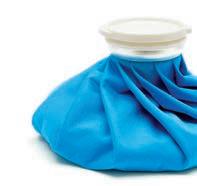
Soothing Solutions
So, you’re laid up on the couch; Netflix is on. Before you sink further into the cushions, soothe your pulled muscle with a few natural remedies. They’ll encourage healing and make lounging more comfy.
1 2 3
Don’t try to power through the pain of a strained muscle—that will only make things worse. Instead, fast track your recovery with these simple steps.

Soak the muscle in Epsom salt for 30 minutes, dry and wrap in a bandage. Two cups of the salts added to a warm bath or a bucket of water should do the trick. Soak once daily until your strained muscle is completely healed.
Or, soak in the same amount of apple cider vinegar for anti-inflammatory and alkalizing effects. You can try to drink the stuff, too, but we’d suggest mixing it with warm water and honey to lessen the bitter taste.
Heat clove oil and gently massage it into your pulled muscle. Its anesthetic and anti-inflammatory properties will ease the pain, reduce swelling and increase blood flow to the area. You’ll experience similar benefits from garlic oil, as well.
42 healthyliving magazines.com AUG ’16
FITNESS
That moment when you bend over weird, lift a heavy weight or play a sport you haven’t played in years and then feel the surging pain of a pulled muscle won’t be your most glamorous, though it may be quite memorable.
Sources: top10homeremedies.com, builtlean.com, mayoclinic.org body HEALTHY
Anti Acid
This behavior, however, could be one reason why you feel tired and sluggish the next day. Too much acidic food can be damaging to your body. The combination of toxins and acids often creates large amounts of inflammation in your body, forcing your body’s systems to work harder throughout the day.
All About Acid
Stressed? Fatigued? Joint and muscle pain? Lay off the acidic food and drinks for a while and see if your ailments begin to improve.
Acidity is measured in pH levels. A pH of 0 is high in acid, while a pH of 14 is alkaline, or base. You guessed it, a pH of 7 is considered neutral. (FYI, our stomach is a 3.5 to break up all the food we eat). The rest of our body, however, hovers between 7.35 and 7.45 regularly.
A diet of too many acidforming foods, including protein, can create acidic urine, which in turn can cause painful uric acid kidney stones. Overacidity can also lead to bone and muscle deterioration, not to mention issues with your liver and heart. Consuming too much acid also ups your risk for cancer.

Try It!
Here are a few simple changes to help eliminate acid from your body and your diet.
1. BREATHE! Believe it or not, deep breathing exercises will help rid damaging acid from your body.

2. HYDRATE WITHOUT COFFEE. Drink an 8-ounce glass of water every morning with half of a lemon. Continue to drink water throughout your day. Every day.
3. MINIMIZE HARMFUL ACIDS. Ca eine, sugar, gluten, dairy, alcohol, soda and processed food are not always your friend. Go easy on them.
4. DRINK SMOOTHIES. Having a fresh, organic smoothie is a great way to feed your body the nutrients it needs. Start with fruit like bananas and berries, and gradually add in spinach or kale.
5. EXERCISE FOR 20 MINUTES EVERY DAY. Sweating helps rid your body of toxins and acids. Visit the gym, go for a swim or take the kids on a bike ride.
Food For Thought
Foods with high acid: Eat less of this…
› Nuts (cashews, peanuts, walnuts)
› Sweeteners (sugars, maple syrup, fruit juices with sugar)
› Breads
› Fruit (blueberries, cranberries, etc)
› Co ee
› Condiments like mayo and ketchup
› Fried foods
› Salt
› Processed lunch meats and other sources of protein like chicken (remove the skin and don’t fry it for a low-acid option) or hot dogs
› Cheeses (Parmesan, cheddar, American, mozzarella)
Foods with low acid: Eat more of this…
› Green vegetables (broccoli, asparagus, celery, green beans)
› Brown rice
› Coconut
› Fish
› Eggs

› Melons and bananas
› Fruit (apples, blackberries, pears)
› Oatmeal
AUG ’16 › healthyliving magazines.com 43
NUTRITION
If you’re like many Americans, you can’t go a day without your morning coffee or your late-night salty snack. (Potato chips sound so much better at 1am.)
Sources: geto youracid.com, greenopedia.com,
healthline.com, webmd.com
body HEALTHY
Face Off
Surely you’ve heard of the magic of coconut oil. But that’s just one oil out of many. Read on to find out some of the great benefits of some top facial oils.




From skin prone to severe dehydration to skin su ering from constant breakouts, oils can help stabilize and regulate the skin’s ecosystem.
Acne.
Studies have found that 5 percent tea tree oil is as effective at treating acne as 5 percent benzoyl peroxide. Miami dermatologist Leslie Baumann recommends it as a gentle, natural alternative to harsher acne treatments such as benzoyl peroxide or salicylic acid that sometimes dry skin out, causing more harm than good.
Dry skin.
Oily skin. Oil on oil? Sounds counterproductive right? Grapeseed oil helps to regulate your body’s natural oil production. Plus, it’s packed with beta-carotene and vitamins D, C and E.
Combination skin.











Try marula oil, made from the nut of the African marula tree, to prevent skin damage and fight breakouts almost immediately. Apply three drops of the oil onto your palm and then apply it to your skin to keep redness and blemishes at bay.
Repair.
Black currant oil is rich in fatty acids and has anti-inflammatory properties. It even works on conditions such as eczema or psoriasis because of the high levels of omega-3 fatty acids contained in this seemingly magical potion.
Discoloration. Rosehip seed oil is ideal for protecting your skin as well as promoting cell regeneration. Perfect for a boost to your moisturizer—just


Anti-aging. Argan oil contains a high concentration of vitamin E and essential fatty acids. Want further proof this oil actually works?

Check out skin care guru Josie Maran’s argan oil skin care line. Fountain of youth, here we come.

Although any oil can help replenish the skin’s lipids, coconut oil is one to especially rave about. As an anti-inflammatory, it is much more e ective than mineral oil at helping skin retain moisture. Want to throw one more into the mix? Extra virgin olive oils labelled as “first cold press” are rich in compounds that nourish the skin, including polyphenols, squalene and fatty acids.

44 healthyliving magazines.com AUG ’16 body HEALTHY BEAUTY
Sources: oilhealthbenefi ts.com, totalbeauty.com
Got Sleep?

may help the next time you’re on the road.
1. Bring your own pillow. A familiar smell and squish can trick your brain into thinking you’re home.

2. Find a hotel with rooms that look like your bedroom. (Good luck with this one!)
3. Invest in a sleep mask or earplugs to block out light and noise.







4. Download smartphone apps that generate white noise or other calming sounds.











5. Take a warm shower right before bed or try reading a few pages of your favorite book to unwind.

MIND HOME FINANCE HEALTHY PAGE 45 Source: newser.com
MIND
Scientists have revealed that one of the main reasons it’s sometimes hard to fall asleep in a new location is because half of our brain stays awake to keep us safe from danger. Who knew?
Bug Off—Naturally!
Keeping The Kiddos Safe
Time spent outdoors is a given during the summer months, with days stretching well into the evening hours. Another given is mosquitoes. Protect the kids with this all-natural bug repellent.
Aquick browse through Google and Pinterest yields plenty of useful tips to rid yourself of an irritating pest issue. Some of our favorites are below. Of course, they’re not guaranteed but certainly worth a try.
SPIDERS: Vinegar is your friend. Mix this with water, and it should e ectively repel any spider that dares to come into your house. It can be sprayed on any type of openings throughout your house as well.

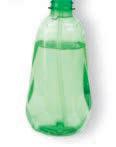

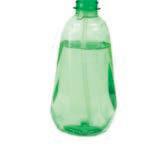

ANTS: Co ee isn’t just necessary to get you through that long Monday; it can be sprinkled around your windows and doors to prevent ants from crawling their way inside uninvited.
MOSQUITOES: Garlic not only scares o vampires but mosquitoes as well. Crush a couple cloves of garlic, and boil in water. Pour this into a spray bottle and squirt it around the problem areas outside your home.
ROACHES: Attention all beer lovers! Pouring beer onto a plate and leaving it near entry points will apparently keep these 6-legged creatures away (or floating in the free booze).
Into The Oils?
Fill an 8-ounce spray bottle 1/2 full with distilled or boiled water. › Add witch hazel to fill almost to the top. › Add 1/2 tsp vegetable glycerin (optional). › Add 30-50 drops of essential oils to desired scent. Keep in mind that the more drops you use, the stronger your spray will be.
The Wellness Mama’s (wellnessmama.com) personal favorite mix is: rosemary, clove, cajeput, lavender, cinnamon and eucalyptus. She says it works great and smells good, too!
Here are 10 fabulous essential oils that naturally repel insects: CITRONELLA: Mosquitoes

LEMON





EUCALYPTUS: Mosquitoes
GERANIUM: Mosquitoes, flies
LAVENDER: Mosquitoes, ticks, chiggers, fleas, flies



LEMONGRASS: Mosquitoes, ticks, chiggers, fleas, flies






PATCHOULI: Gnats
PEPPERMINT: Spiders, ants
ROSEMARY: Fleas, ticks
TEA TREE: Mosquitoes, ants
THYME: Mosquitoes, flies
EXTRA TIP: When using essential oils, remember to mix 2 ½ teaspoons of oil with 1 cup of grain alcohol in a spray bottle. Mist throughout home or yard.
After all, who doesn’t want to be a little more environmentally conscious these days? Sources:
46 healthyliving magazines.com AUG ’16
vibe HEALTHY HOME
With chemicals being harmful to both your home and your health, it could be beneficial to create a pest killer using products found under your kitchen sink.
homeremedyhacks.com, lifehacker.com, info.achs.edu, wellnessmama.com
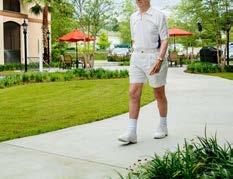


































AUG ’16 › healthyliving magazines.com 47 Affordable Luxury Living... You Deserve It! Retirement Living At Its Best • Chef-prepared buffet dining • Housekeeping and linen service • Full-service beauty salon and barber shop • Paid utilities (excluding phone) • Outings and daily engaging activities • Membership to AJ’s Fitness Center is included! Not-For-Profit Provider 3211 SW 42nd Street, Ocala 352-237-7776 www.hawthornevillageofocala.com Call today for a complimentary buffet lunch and tour! MidState Skin Institute at Deerwood 1630 SE 18th Street, #400, Ocala, FL 34471 (352) 512-0092 MidState Skin Institute at Jasmine Park 7550 SW 61st Ave., Suite 1, Ocala, FL 34476 (352) 732-7337
Melissa Singleton, PA-C
MidState Skin Institute is pleased to announce our newest office location in Jasmine Park! MidStateSkin.com CLINICAL DERMATOLOGY: Acne Eczema Psoriasis Skin Cancer Vitiligo Sun Spots Liver Spots Rosacea COSMETIC DERMATOLOGY: Botox Fillers (Juvederm/Restylane) Laser hair removal Photofacials for rosacea & sundamaged skin Laser treatments for acne scarring Individualized skin care regimens VelaShape cellulite reduction treatment SCAN HERE ON YOUR SMARTPHONE FOR MORE INFORMATION SERVICES INCLUDE:
Dr. Ashley Cauthen
Dr. Christina Mitchell
Kids & Cash
It is crucial to teach children early on that money doesn’t grow on trees and you can’t just “swipe” a credit card whenever you want. Experts say children as young as 3 can grasp financial concepts such as saving and spending, and a report by the University of Cambridge revealed money habits are formed by age 7.

Knowing this, the sooner parents take an active role in teaching kids financial basics, the better. Parents are, after all, the biggest influence on decisions a child makes later in life— financial decisions included. Here are some ways to make even a trip to the grocery store a teachable moment.
Encourage your kids to ask questions about money. What’s a check? How does a debit card work? How much candy can I buy with $2?
Next time you go to the bank, take your kids with you! Explain the different accounts your money is put into and what the teller is doing. (They might even get a lollipop!)
Give your child some money while grocery shopping and let him or her make the decisions about what to buy. It’s important to understand what can be purchased with said amount of money.
Talk to your child while shopping about how you decide what to buy. Discuss practical choices like whether something is a need versus a want.
Save It, Don’t Spend It
Here are a few tips to encourage your kids to save money.


USING ENVELOPES : Have your kids draw pictures (or cut and paste catalog pictures) of toys they want on di erent envelopes. This will help them understand that some things take longer to save for.


SAVINGS GOAL CHART : Make a chart of how many weeks it will take your child to save up for something. They will be excited to save in order to reach their goal.
REWARDS FOR SAVING MONEY : If your kid saves their money for a while, reward them with an extra half hour of TV or video games or a trip to the park to continue to motivate them.
SET A GOOD EXAMPLE : If your child sees you putting money into a savings jar, they will want to do the same. Saving money will start to become more normal to them (and hopefully to you, too).
MATCH THEIR CONTRIBUTIONS : Matching your kids’ savings is a good way to encourage them to save a little more. A quarter for a quarter, a dollar for a dollar.
LET KIDS MAKE PURCHASING MISTAKES: Even if you think they’re wasting their money on something, you should let them buy it anyway. They will soon stop wanting to buy toys that they only play with once or twice.
Sources: moneycrashers.com, moneysmart.gov.au, parents.com, money.usnews.com, windgatewealthmanagement.com, forbes.com



48 healthyliving magazines.com AUG ’16
vibe HEALTHY FINANCE
In a world of credit cards, Internet banking and online shopping, kids don’t often see people buying products with actual money anymore. This can make the world confusing for kids who are new to the world of finance.
The Nature Coast’s LOCAL radio stations!












More music & less talk.
We know why our audience listens to our stations…because they LOVE THE MUSIC! So we avoid DJ chatter and deliver the greatest Top 40 and Classic hits of all time, along with important information like news, sports and weather. As a result, our listeners listen longer!

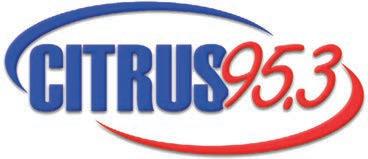

The Nature Coast’s #1 hit music station


Classic Hits
Classic Hits





















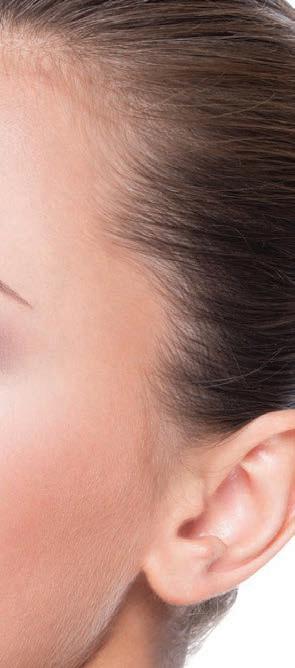





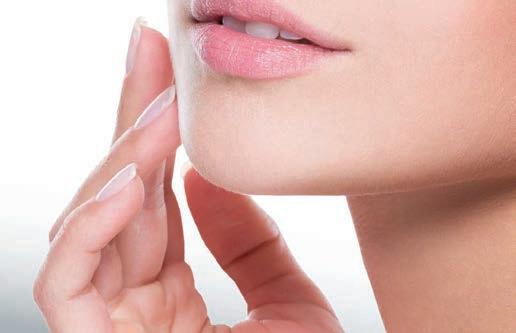
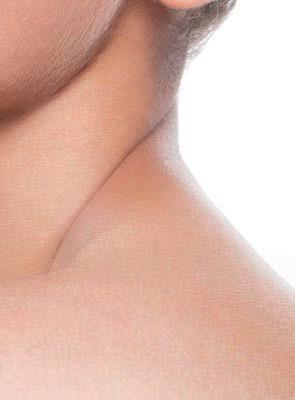


















Board Certified Plastic Surgeons James Rogers DMD MD • Navinderdeep Nijher Leonik Ahumada MD FACS Breast Augmentation Tummy Tuck Facelift Liposuction Eyelid Surgery Hair Transplant Botox & Injectable Fillers Spider Veins Chemical Peels CALL US TODAY (352) 629-8154 REQUEST A FREE CONSULTATION www.OcalaPlasticSurgery.com OCALA/PADDOCK PARK LOCATION 3320 SW 34th Circle, Ocala, FL 34474 THE VILLAGES/DANA CENTER LOCATION 11950 CR 101, Suite 205, The Villages, FL 32162 MEMBER OF American Society for Aesthetic Plastic Surgery MEMBER OF American Society of Plastic Surgeons MD









































 Carrol Dillon-Smith Administrator/Owner Megan Christine Forrest Director of Operations
Carrol Dillon-Smith Administrator/Owner Megan Christine Forrest Director of Operations















 By Cealia Athanason,
By Cealia Athanason,








 By Molly Norman
By Molly Norman































































 › By Cealia Athanason
› By Cealia Athanason


































































































































































































































































































































 ByKatieMcPherson
ByKatieMcPherson


















































































































































































 By Cynthia McFarland
By Cynthia McFarland
























































































































































































































































































